- Applying to Uni
- Apprenticeships
- Health & Relationships
- Money & Finance
Personal Statements
- Postgraduate
- U.S Universities
University Interviews
- Vocational Qualifications
- Accommodation
- Budgeting, Money & Finance
- Health & Relationships
- Jobs & Careers
- Socialising
Studying Abroad
- Studying & Revision
- Technology
- University & College Admissions
Guide to GCSE Results Day
Finding a job after school or college
Retaking GCSEs

In this section
Choosing GCSE Subjects
Post-GCSE Options
GCSE Work Experience
GCSE Revision Tips
Why take an Apprenticeship?
Applying for an Apprenticeship
Apprenticeships Interviews
Apprenticeship Wage
Engineering Apprenticeships
What is an Apprenticeship?
Choosing an Apprenticeship
Real Life Apprentices
Degree Apprenticeships
Higher Apprenticeships
A Level Results Day 2024
AS Levels 2024
Clearing Guide 2024
Applying to University
SQA Results Day Guide 2024
BTEC Results Day Guide
Vocational Qualifications Guide
Sixth Form or College
International Baccalaureate
Post 18 options
Finding a Job
Should I take a Gap Year?
Travel Planning
Volunteering
Gap Year Blogs
Applying to Oxbridge
Applying to US Universities
Choosing a Degree
Choosing a University or College
Personal Statement Editing and Review Service
Clearing Guide
Guide to Freshers' Week
Student Guides
Student Cooking
Student Blogs
- Top Rated Personal Statements
Personal Statement Examples
Writing Your Personal Statement
- Postgraduate Personal Statements
- International Student Personal Statements
- Gap Year Personal Statements
Personal Statement Length Checker
Personal Statement Examples By University
- Personal Statement Changes 2025
Personal Statement Template
Job Interviews
Types of Postgraduate Course
Writing a Postgraduate Personal Statement
Postgraduate Funding
Postgraduate Study
Internships
Choosing A College
Ivy League Universities
Common App Essay Examples
Universal College Application Guide
How To Write A College Admissions Essay
College Rankings
Admissions Tests
Fees & Funding
Scholarships
Budgeting For College
Online Degree
Platinum Express Editing and Review Service
Gold Editing and Review Service
Silver Express Editing and Review Service
UCAS Personal Statement Editing and Review Service
Oxbridge Personal Statement Editing and Review Service
Postgraduate Personal Statement Editing and Review Service
You are here
- Mature Student Personal Statements
- Personal Statements By University
- Accountancy and Finance Personal Statements
- Actuarial Science Personal Statements
- American Studies Personal Statements
- Anthropology Personal Statements
- Archaeology Personal Statements
- Architecture Personal Statements
- Art and Design Personal Statements
- Biochemistry Personal Statements
- Bioengineering Personal Statements
- Biology Personal Statements
- Biomedical Science Personal Statements
- Biotechnology Personal Statements
- Business Management Personal Statement Examples
- Business Personal Statements
- Catering and Food Personal Statements
- Chemistry Personal Statements
- Classics Personal Statements
- Computer Science Personal Statements
- Computing and IT Personal Statements
- Criminology Personal Statements
- Dance Personal Statements
- Dentistry Personal Statements
- Design Personal Statements
- Dietetics Personal Statements
- Drama Personal Statements
- Economics Personal Statement Examples
- Education Personal Statements
- Engineering Personal Statement Examples
- English Personal Statements
- Environment Personal Statements
- Environmental Science Personal Statements
- Event Management Personal Statements
- Fashion Personal Statements
- Film Personal Statements
- Finance Personal Statements
- Forensic Science Personal Statements
- Geography Personal Statements
- Geology Personal Statements
- Health Sciences Personal Statements
- History Personal Statements
- History of Art Personal Statements
- Hotel Management Personal Statements
- International Relations Personal Statements
- International Studies Personal Statements
- Islamic Studies Personal Statements
- Japanese Studies Personal Statements
- Journalism Personal Statements
- Land Economy Personal Statements
- Languages Personal Statements
- Law Personal Statement Examples
- Linguistics Personal Statements
- Management Personal Statements
- Marketing Personal Statements
- Mathematics Personal Statements
- Media Personal Statements
- Medicine Personal Statement Examples
- Midwifery Personal Statements
- Music Personal Statements
- Music Technology Personal Statements
- Natural Sciences Personal Statements
- Neuroscience Personal Statements
- Nursing Personal Statements
- Occupational Therapy Personal Statements
- Osteopathy Personal Statements
- Oxbridge Personal Statements
- Pharmacy Personal Statements
- Philosophy Personal Statements
- Photography Personal Statements
- Physics Personal Statements
- Physiology Personal Statements
- Physiotherapy Personal Statements
- Politics Personal Statements
- Psychology Personal Statement Examples
- Radiography Personal Statements
- Religious Studies Personal Statements
- Social Work Personal Statements
- Sociology Personal Statements
- Sports & Leisure Personal Statements
- Sports Science Personal Statements
- Surveying Personal Statements
- Teacher Training Personal Statements
- Theology Personal Statements
- Travel and Tourism Personal Statements
- Urban Planning Personal Statements
- Veterinary Science Personal Statements
- Zoology Personal Statements
- Personal Statement Editing Service
- Personal Statement Writing Guide
- Submit Your Personal Statement
- Personal Statement Questions 2025
Photography Personal Statement Examples
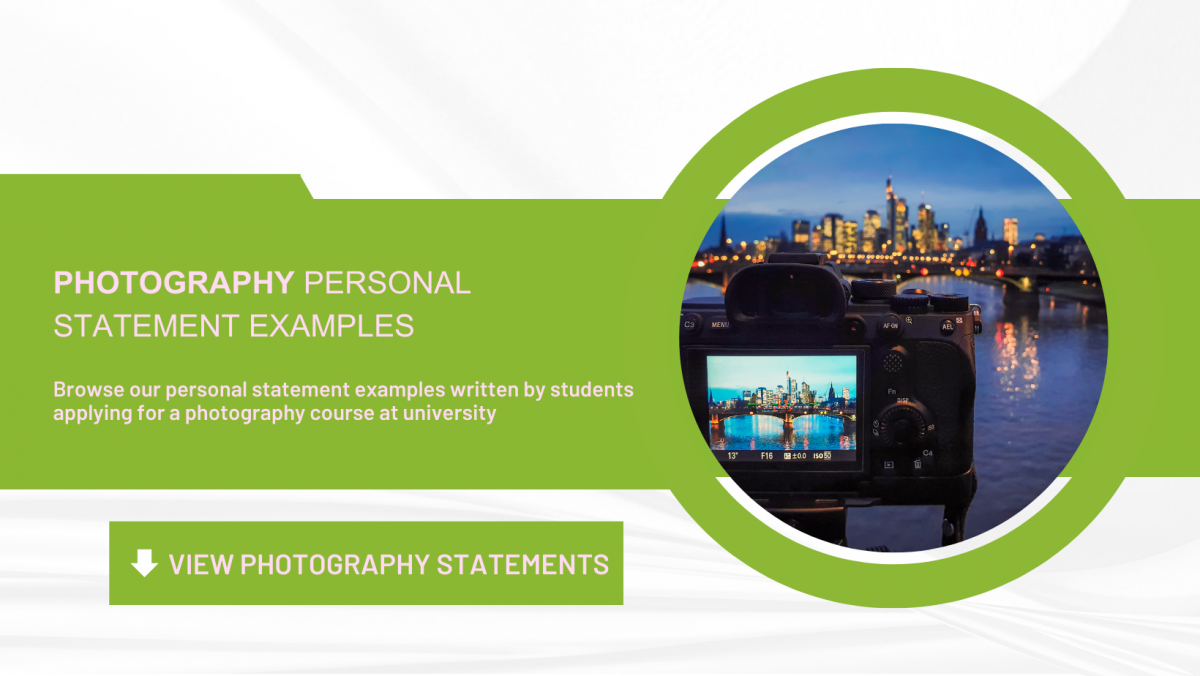
Related resources
A level results day.

Find out more

Think you can get into a top-10 school? Take our chance-me calculator... if you dare. 🔥
Last updated March 17, 2023
Every piece we write is researched and vetted by a former admissions officer. Read about our mission to pull back the admissions curtain.
Blog > Common App , Essay Advice > How to Write a College Essay About Photography
How to Write a College Essay About Photography
Admissions officer reviewed by Ben Bousquet, M.Ed Former Vanderbilt University
Written by Alex McNeil, MA Admissions Consultant
Key Takeaway
Whether you're starting to dive into your personal statement or taking a bit out of extracurriculars, you're probably wondering which topics are OK to draw from in your essays.
Some topics are obviously valuable, while others are a bit more dubious. However, there's a third category: essay topics that may be overused to the point that they lose their potency and enter into the territory of cliché.
One topic that our students ask about a lot is essays about photography. Photography, being a fairly common extracurricular, is a writing area that many students explore every year on both personal and supplemental essays.
So that begs the question: Given the popularity of the topic, is it a good idea to craft your college essay around a photography topic? And if you do, what are some good ways to approach a photo essay that put the topic in its best light.
Warning: Overused extracurricular essays are hard to do well.
We won't sugar-coat it: an essay about a very common extracurricular may be set up to do less well than one about an extracurricular that's less common or in which you've performed EXTREMELY well.
A lot of students have taken an intro to photography class, borrowed a DLSR or film camera, and traipsed around their neighborhood shooting black-and-white stills of popular landmarks or landscapes.
Photography Essay Challenges
So, if photography resembles this kind of passing or casual hobby for you, you run into two problems right away.
I recommend honing in on a topic that has deeper meaning. It's the surest way to give admissions officers a clear and honest picture of who YOU are in a way that stands out from other students.
However, photography may be that topic for you. Just do some soul-searching before you commit to writing an essay about photography — ask yourself if it's REALLY a meaningful topic, or merely something you enjoy.
2. The other possible challenge is that photography is a very, very common extracurricular. I would guess that up to 15% of all student applicants list photography on their resumes, and a fair share of those probably choose to write something about it, even if just in an extracurricular essay.
Now, I really don't encourage students to plan their essays around novelty, novelty, novelty. Because novelty for its own sake is never a good solution. However, you should try to avoid the most commonly-used essay topics or at least be CERTAIN that you have a meaningful way to approach them.
For a photography essay, for example, I would want to be sure that you've achieved something pretty significantly impressive as a photographer — maybe you've won a national championship or your work has been featured in National Geographic. Okay, or maybe you’ve contributed or received recognition on a more local level, but the point still stands.
If that's the case, or something like it, you might be in a great position to start writing a photography college essay that stands out from the crowd. So give it a go.
OK, warning over. Let's talk about some strategies for writing an effective college essay about photography.
Ways to approach a college essay about photography
I want to provide two possible ways to write an essay about photography, the "snapshot" approach and the "lens on the world" approach. Keep in mind that these are just two ideas to get your brain jogging about the possibilities. Always try to be creative!
Essay Framework #1: Snapshot structure
The "snapshot" structure is a way of structuring your narrative into a series of "snapshot" moments that take the writer through a journey.
A "snapshot" approach to an essay about photography might work really well. Each frame could be a literal snapshot — a meaningful picture that represents something about your life or your journey through photography.
You could write this essay as a series of short "vignettes," little episodes that add up to a powerful story about what photography has meant to you since you started.
Essay Framework #2: Lens to see the world
This framework shares some similarities to the snapshot structure. Here, you would show the reader how you see the world from behind the lens of your camera.
When I was shooting more often (I, too, saved up to buy a refurbished DSLR in high school and fancied myself a photographer for a few years), I remember how sharpened my ability to see details became. I was way more perceptive and observant of the world around me. And when I was actually behind the lens, I saw the world in a different way — bound by rules of composition, light sources, and quiet but eloquent moments worth capturing.
In this essay framework (which is not quite as structured as the snapshot frame) you could take the reader behind the lens and show them how the world transforms or opens up for you when you're shooting.
In both cases, what's key is that the narrative clearly shows an admission committee that photography isn't just an idle pastime or hobby. Instead, they should understand that photography is one of the key ways that you interact with and understand the world.
If you don't feel like your participation with photography meets this high bar, then you might want to go hunting for different themes to anchor your essay. In all of your essays, writing about meaningful experiences that have deep roots in your life is the way to go.
Please, please: Do NOT write an essay about photography because you think it diversifies your narrative even though you don't really care too much about it. Admissions officers will sniff that out and not smile favorably on the tactic.
Liked that? Try this next.

The Incredible Power of a Cohesive College Application

21 College Essay Examples (Graded by Former Admissions Officers)

How to Write Supplemental Essays that Will Impress Admissions Officers

How to Write a Personal Statement for Colleges
"the only actually useful chance calculator i’ve seen—plus a crash course on the application review process.".
Irena Smith, Former Stanford Admissions Officer
We built the best admissions chancer in the world . How is it the best? It draws from our experience in top-10 admissions offices to show you how selective admissions actually works.
23 Photo Essay Ideas and Examples (to Get Your Creative Juices Flowing!)
A Post By: Kevin Landwer-Johan

Looking for inspiration? Our 23 photo essay ideas will take your photography skills to new heights!
A single, strong photograph can convey a lot of information about its subject – but sometimes we have topics that require more than one image to do the job. That’s when it’s time to make a photo essay: a collection of pictures that together tell the bigger story around a chosen theme.
In the following sections, we’ll explore various photo essay ideas and examples that cover a wide range of subjects and purposes. From capturing the growth of your children to documenting local festivals, each idea offers an exciting opportunity to tell a story through your lens, whether you’re a hobbyist or a veteran professional.
So grab your camera, unleash your creativity, and let’s delve into the wonderful world of photo essay examples!
What is a photo essay?
Simply put, a photo essay is a series of carefully selected images woven together to tell a story or convey a message. Think of it as a visual narrative that designed to capture attention and spark emotions.

Now, these images can revolve around a broad theme or focus on a specific storyline. For instance, you might create a photo essay celebrating the joy of companionship by capturing 10 heartwarming pictures of people sharing genuine laughter. On the other hand, you could have a photo essay delving into the everyday lives of fishermen in Wales by following a single fisherman’s journey for a day or even a week.
It’s important to note that photo essays don’t necessarily have to stick to absolute truth. While some documentary photographers prefer to keep it authentic, others may employ techniques like manipulation or staging to create a more artistic impact. So there is room for creativity and interpretation.
Why you should create a photo essay
Photo essays have a way of expressing ideas and stories that words sometimes struggle to capture. They offer a visual narrative that can be incredibly powerful and impactful.
Firstly, photo essays are perfect when you have an idea or a point you want to convey, but you find yourself at a loss for words. Sometimes, emotions and concepts are better conveyed through images rather than paragraphs. So if you’re struggling to articulate a message, you can let your photos do the talking for you.
Second, if you’re interested in subjects that are highly visual, like the mesmerizing forms of architecture within a single city, photo essays are the way to go. Trying to describe the intricate details of a building or the play of light and shadows with words alone can be challenging. But through a series of captivating images, you can immerse your audience in the architecture.
And finally, if you’re aiming to evoke emotions or make a powerful statement, photo essays are outstanding. Images have an incredible ability to shock, inspire, and move people in ways that words often struggle to achieve. So if you want to raise awareness about an environmental issue or ignite a sense of empathy, a compelling series of photographs can have a profound impact.
Photo essay examples and ideas
Looking to create a photo essay but don’t know where to start? Here are some handy essay ideas and examples for inspiration!
1. A day in the life
Your first photo essay idea is simple: Track a life over the course of one day. You might make an essay about someone else’s life. Or the life of a location, such as the sidewalk outside your house.
The subject matter you choose is up to you. But start in the morning and create a series of images showing your subject over the course of a typical day.
(Alternatively, you can document your subject on a special day, like a birthday, a wedding, or some other celebration.)

2. Capture hands
Portraits focus on a subject’s face – but why not mix it up and make a photo essay that focuses on your subject’s hands?
(You can also focus on a collection of different people’s hands.)
Hands can tell you a lot about a person. And showing them in context is a great way to narrate a story.

3. Follow a sports team for a full season
Sports are all about emotions – both from the passionate players and the dedicated fans. While capturing the intensity of a single game can be exhilarating, imagine the power of telling the complete story of a team throughout an entire season.
For the best results, you’ll need to invest substantial time in sports photography. Choose a team that resonates with you and ensure their games are within a drivable distance. By photographing their highs and lows, celebrations and challenges, you’ll create a compelling photo essay that traces their journey from the first game to the last.
4. A child and their parent
Photographs that catch the interaction between parents and children are special. A parent-child connection is strong and unique, so making powerful images isn’t challenging. You just need to be ready to capture the special moments as they happen.
You might concentrate on a parent teaching their child. Or the pair playing sports. Or working on a special project.
Use your imagination, and you’ll have a great time with this theme.
5. Tell a local artist’s story
I’ve always enjoyed photographing artists as they work; studios have a creative vibe, so the energy is already there. Bring your camera into this environment and try to tell the artist’s story!
An artist’s studio offers plenty of opportunities for wonderful photo essays. Think about the most fascinating aspects of the artist’s process. What do they do that makes their art special? Aim to show this in your photos.
Many people appreciate fine art, but they’re often not aware of what happens behind the scenes. So documenting an artist can produce fascinating visual stories.

6. Show a tradesperson’s process
Do you have a plumber coming over to fix your kitchen sink? Is a builder making you a new deck?
Take photos while they work! Tell them what you want to do before you start, and don’t forget to share your photos with them.
They’ll probably appreciate seeing what they do from another perspective. They may even want to use your photos on their company website.

7. Photograph your kids as they grow
There’s something incredibly special about documenting the growth of our little ones. Kids grow up so quickly – before you know it, they’re moving out. Why not capture the beautiful moments along the way by creating a heartwarming photo essay that showcases their growth?
There are various approaches you can take, but one idea is to capture regular photos of your kids standing in front of a distinct point of reference, such as the refrigerator. Over a year or several years, you can gather these images and place them side by side to witness your childrens’ incredible transformations.
8. Cover a local community event
A school fundraiser, a tree-planting day at a park, or a parade; these are are all community events that make for good photo essay ideas.
Think like a photojournalist . What type of images would your editor want? Make sure to capture some wide-angle compositions , some medium shots, and some close-ups.
(Getting in close to show the details can often tell as much of a story as the wider pictures.)
9. Show fresh market life
Markets are great for photography because there’s always plenty of activity and lots of characters. Think of how you can best illustrate the flow of life at the market. What are the vendors doing that’s most interesting? What are the habits of the shoppers?
Look to capture the essence of the place. Try to portray the people who work and shop there.

10. Shoot the same location over time
What location do you visit regularly? Is there a way you can make an interesting photo essay about it?
Consider what you find most attractive and ugly about the place. Look for aspects that change over time.
Any outdoor location will look different throughout the day. Also think about the changes that occur from season to season. Create an essay that tells the story of the place.
11. Document a local festival
Festivals infuse cities and towns with vibrant energy and unique cultural experiences. Even if your own town doesn’t have notable festivals, chances are a neighboring town does. Explore the magic of these celebrations by documenting a local festival through your lens.
Immerse yourself in the festivities, arriving early and staying late. Capture the colorful displays and the people who make the festival come alive. If the festival spans multiple days, consider focusing on different areas each time you visit to create a diverse and comprehensive photo essay that truly reflects the essence of the event.
12. Photograph a garden through the seasons
It might be your own garden . It could be the neighbor’s. It could even be the garden at your local park.
Think about how the plants change during the course of a year. Capture photos of the most significant visual differences, then present them as a photo essay.

13. Show your local town or city
After spending several years in a particular area, you likely possess an intimate knowledge of your local town or city. Why not utilize that familiarity to create a captivating photo essay that showcases the essence of your community?
Delve into what makes your town special, whether it’s the charming streets, unique landmarks, or the people who shape its character. Dedicate time to capturing the diverse aspects that define your locale. If you’re up for a more extensive project, consider photographing the town over the course of an entire year, capturing the changing seasons and the dynamic spirit of your community.
14. Pick a local cause to highlight
Photo essays can go beyond passive documentation; they can become a part of your activism, too!
So find a cause that matters to you. Tell the story of some aspect of community life that needs improvement. Is there an ongoing issue with litter in your area? How about traffic; is there a problematic intersection?
Document these issues, then make sure to show the photos to people responsible for taking action.
15. Making a meal
Photo essay ideas can be about simple, everyday things – like making a meal or a coffee.
How can you creatively illustrate something that seems so mundane? My guess is that, when you put your mind to it, you can come up with many unique perspectives, all of which will make great stories.

16. Capture the life of a flower
In our fast-paced lives, it’s easy to overlook the beauty that surrounds us. Flowers, with their mesmerizing colors and rapid life cycles, offer a captivating subject for a photo essay. Try to slow down and appreciate the intricate details of a flower’s existence.
With a macro lens in hand, document a single flower or a patch of flowers from their initial shoots to their inevitable wilting and decomposition. Experiment with different angles and perspectives to bring viewers into the enchanting world of the flower. By freezing these fleeting moments, you’ll create a visual narrative that celebrates the cycle of life and the exquisite beauty found in nature’s delicate creations.
17. Religious traditions
Religion is often rich with visual expression in one form or another. So capture it!
Of course, you may need to narrow down your ideas and choose a specific aspect of worship to photograph. Aim to show what people do when they visit a holy place, or how they pray on their own. Illustrate what makes their faith real and what’s special about it.

18. Historic sites
Historic sites are often iconic, and plenty of photographers take a snapshot or two.
But with a photo essay, you can illustrate the site’s history in greater depth.
Look for details of the location that many visitors miss. And use these to build an interesting story.
19. Show the construction of a building
Ever been away from a familiar place for a while only to return and find that things have changed? It happens all the time, especially in areas undergoing constant development. So why not grab your camera and document this transformation?
Here’s the idea: Find a building that’s currently under construction in your area. It could be a towering skyscraper, a modern office complex, or even a small-scale residential project. Whatever catches your eye! Then let the magic of photography unfold.
Make it a habit to take a photo every day or two. Watch as the building gradually takes shape and evolves. Capture the construction workers in action, the cranes reaching for the sky, and the scaffolding supporting the structure.
Once the building is complete, you’ll have a treasure trove of images that chronicle its construction from start to finish!
20. Document the changing skyline of the city
This photo essay example is like the previous one, except it works on a much larger scale. Instead of photographing a single building as it’s built, find a nice vantage point outside your nearest city, then photograph the changing skyline.
To create a remarkable photo essay showcasing the changing skyline, you’ll need to scout out the perfect vantage point. Seek high ground that offers a commanding view of the city, allowing you to frame the skyline against the horizon. Look for spots that give you an unobstructed perspective, whether a rooftop terrace, a hillside park, or even a nearby bridge.
As you set out on your photography expedition, be patient and observant. Cities don’t transform overnight; they change gradually over time. Embrace the passage of days, weeks, and months as you witness the slow evolution unfold.
Pro tip: To capture the essence of this transformation, experiment with various photographic techniques. Play with different angles, framing, and compositions to convey the grandeur and dynamism of the changing skyline. Plus, try shooting during the golden hours of sunrise and sunset , when the soft light bathes the city in a warm glow and accentuates the architectural details.
21. Photograph your pet
If you’re a pet owner, you already have the perfect subject for a photo essay!
All pets , with the possible exception of pet rocks, will provide you with a collection of interesting moments to photograph.
So collect these moments with your camera – then display them as a photo essay showing the nature and character of your pet.

22. Tell the story of a local nature preserve
Ah, the wonders of a local nature preserve! While it may not boast the grandeur of Yosemite National Park, these hidden gems hold their own beauty, just waiting to be discovered and captured through the lens of your camera.
To embark on this type of photo essay adventure, start by exploring all the nooks and crannies of your chosen nature preserve. Wander along its winding trails, keeping an eye out for unique and captivating subjects that convey the essence of the preserve.
As you go along, try to photograph the intricate details of delicate wildflowers, the interplay of light filtering through a dense forest canopy, and the lively activities of birds and other wildlife.
23. Show the same subject from multiple perspectives
It’s possible to create an entire photo essay in a single afternoon – or even in a handful of minutes. If you don’t love the idea of dedicating yourself to days of photographing for a single essay, this is a great option.
Simply find a subject you like, then endeavor to capture 10 unique images that include it. I’d recommend photographing from different angles: up above, down low, from the right and left. You can also try getting experimental with creative techniques, such as intentional camera movement and freelensing. If all goes well, you’ll have a very cool set of images featuring one of your favorite subjects!
By showcasing the same subject from multiple perspectives, you invite viewers on a visual journey. They get to see different facets, textures, and details that they might have overlooked in a single photograph. It adds depth and richness to your photo essay, making it both immersive and dynamic.
Photo essay ideas: final words
Remember: Photo essays are all about communicating a concept or a story through images rather than words. So embrace the process and use images to express yourself!
Whether you choose to follow a sports team through a thrilling season, document the growth of your little ones, or explore the hidden treasures of your local town, each photo essay has its own magic waiting to be unlocked. It’s a chance to explore your creativity and create images in your own style.
So look at the world around you. Grab your gear and venture out into the wild. Embrace the beauty of nature, the energy of a bustling city, or the quiet moments that make life special. Consider what you see every day. What aspects interest you the most? Photograph those things.
You’re bound to end up with some amazing photo essays!
Now over to you:
Do you have any photo essay examples you’re proud of? Do you have any more photo essay ideas? Share your thoughts and images in the comments below!

Read more from our Tips & Tutorials category
Kevin Landwer-Johan is a photographer, photography teacher, and author with over 30 years of experience that he loves to share with others.
Check out his website and his Buy Me a Coffee page .

- Guaranteed for 2 full months
- Pay by PayPal or Credit Card
- Instant Digital Download

- All our best articles for the week
- Fun photographic challenges
- Special offers and discounts

19 Awesome Photo Essay Examples and Ideas You Should Try

Photo essays are a great way to push your creative skills and become a better photographer. By taking just one photo essay example from this article and trying it for yourself, you’ll learn how to tell stories will your camera.
Whether you want to be a photojournalist, event photographer, or fantasy photographer, shooting photo essays will help you hone your skills.
We start the article by looking at photo essay examples from the professionals. These examples with fire up your inspiration and show you what’s possible with photo essays. We then move on to photo essay ideas anyone can try. These are the perfect starting point for anyone interested in narrative photography.
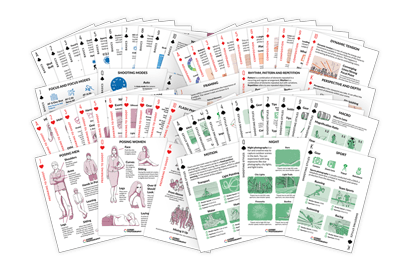
- Efficiently covers 52 topics for quick learning and mastery.
- Designed for clarity with beautiful illustrations and layouts.
- Accessible anytime, anywhere—downloadable or printable for convenience.

If you buy a product through one of our referral links we will earn a commission (without costing you anything). Prices last updated on .
As an Amazon Associate, I earn from qualifying purchases. Product prices and availability are accurate as of the date/time indicated and are subject to change. Any price and availability information displayed on Amazon at the time of purchase will apply to the purchase of this product.
What is a Photo Essay?
I’m sure we all know what an essay is. It’s a concise piece of writing that studies one particular subject, exploring different details and aspects of that subject to inform and educate the reader. A photo essay is the same thing, only it uses photographs instead of words.
A photo essay can be about practically anything. We’ll explore specific photo essay ideas in detail later, but the subject could be anything from a local sports team to climate breakdown.
But the key to a good photo essay is to stay focused. We don’t just mean staying focused with your camera and lens. We mean staying focused on your subject. Don’t lose sight of the subject or the story. Avoid distractions and make sure the subject is clear in your images.
That doesn’t mean you can’t explore different aspects of your chosen subject. Looking at something from different angles or following threads and theories can make for a very stimulating photo essay. But don’t lose focus completely. Make sure all the photos add to the overall theme of the essay.
You can use many different types of photography within a photo essay. You can use candid street or documentary style photography. Portrait photography always brings a personal touch to a photo essay. You can also use more staged and considered styles of photography to explore your subject.
Professional Photo Essay Examples
We’ll now look at some photo essay examples from professional photographers. Seeing how the pros use photos to tell stories or explore topics will show you what can be achieved with a strong photo essay.
Women of the Cossack Resurgence
Anastasia Taylor-Lind is one of the finest photojournalists working today . And her Women of the Cossack Resurgent is the perfect photo essay example for anyone interested in photojournalism or documentary photography.
Taylor-Lind’s extraordinary essay looks at young Cossack women as they pass through an education system that’s rediscovered its nationalist verve. It’s clear from the photos, this schooling is more radical than we are accustomed to in the West. A militant edge runs straight all the way through it.
She uses a documentary photography approach with candid shots. But there’s no sense that this is an exposé with hidden cameras. The viewer gets an inside glimpse into an otherwise mysterious world without feeling like an intruder
See the full photo essay on Taylor-Lind’s website: Women of the Cossack Resurgence
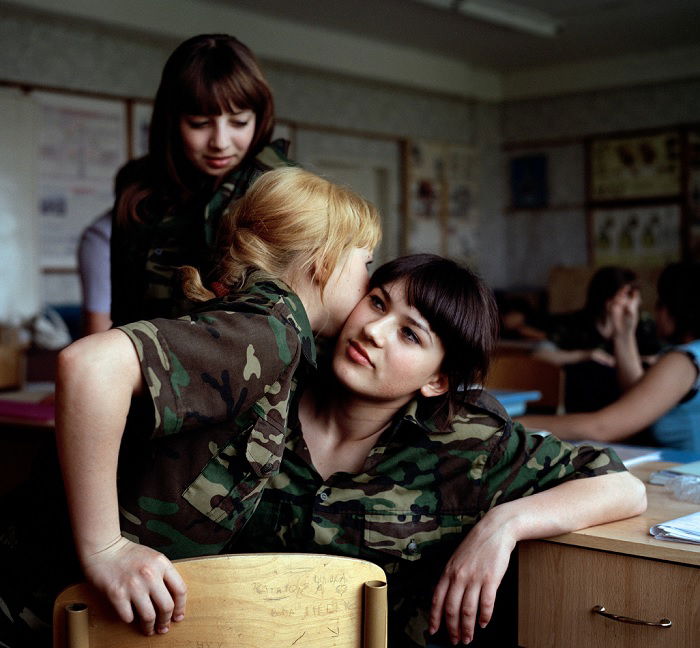
Bachelorette
Dina Litovsky ‘s photo essay titled Bachelorette explores the growing culture of the bachelorette party. Her garish collection of documentary photos shines a lights on a western sub-culture that, for many around the world, remains mysterious, scary, or completely unknown.
Gender norms are always changing, sometimes for the better, sometimes not. And while many see the bachelorette party as a debauched, sleazy affair, it still marks a step in the right direction for women’s equality in western culture.
Sex plays a big part in bachelorette events. It might seem lewd or crude to many, it shows that in the 21st century, women are losing just as much sexual freedom when getting married. This is a truly modern phenomenon.
See the full photo essay on Litovsky’s website: Bachelorette
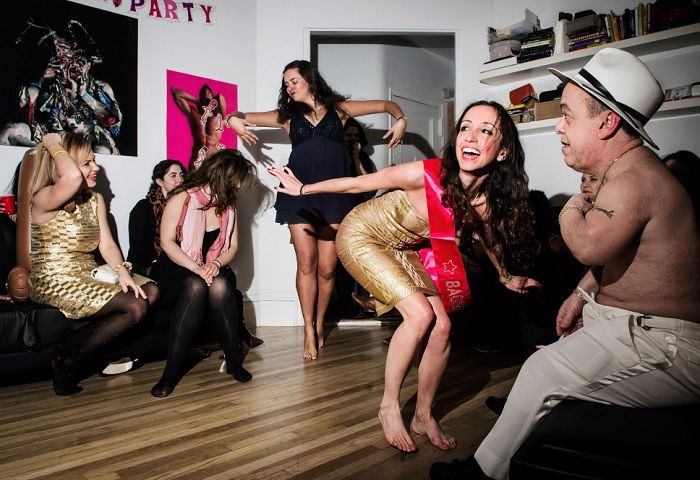
The Knife and Gun Club
This uncompromising photo essay from Eugene Richards gives an unflinching view of the realities of a hospital emergency room in the USA. Published in 1989, the essay still packs a punch today. The equipment and clothes are dated, but the images have lost none of their visceral power.
Richard’s hard-hitting images offer a true reflection of life in an A&E ward. The stress, energy, and raw emotion all come through loud and clear in every photo within the essay.
Focused and concise while being informative and powerful, the Knife and Gun Club is one of the finest photo essay examples.
See more of this photo essay on Eugene Richard’s website: The Knife and Gun Club
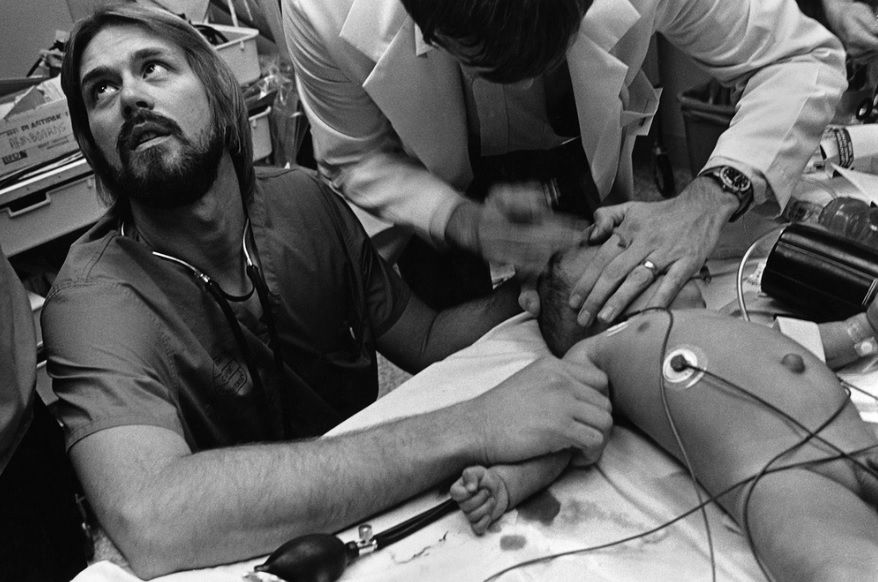
Sierra Leone – War Reparations
Like many countries in sub-Saharan Africa, Sierra Leone has had more than its fair share of strife. A neo-colonialist world leaves few unscathed, and Nick Danziger ‘s photo essay brings those victims into sharp focus. He shows the viewer how profit accumulation in the Global North reaps violence and suffering in the Global South.
While Danziger’s subjects are victims of violence, his images show a people with dignity and pride. There’s sympathy within the images but he doesn’t drown them in pity. His images are brutal and honest, but also warm and intimate.
We’ve chosen Sierra Leone as a photo essay example, but we could have chosen any number of Danziger’s essays. His humanitarian photography is the best in the business. But he has covered a wide range of subjects from Tony Blair to the All Blacks rugby team.
See the full photo essay on Nick Danziger’s website: Sierra Leone – War Reparations
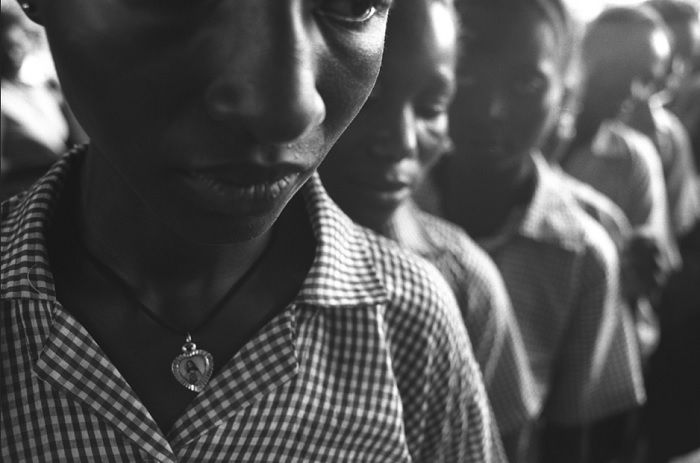
Anya Anti is the name of the artist rather than the name of a specific photo essay. Anti works in a different way to the previous photographers. Rather than have separate collections of photo essays, her wider collection focuses on a collection of interconnecting themes. You can take any of her images and group them together to create a coherent photo essay.
Another major difference is her style. She’s a fantasy photographer who uses surreal elements to tell her stories. Anti’s images are vivid and alive with metaphor and symbolism.
Nature plays a big role in her photography. She explores our relationship to nature, how we are one and the same and how fragile nature can be.
Anti demonstrates how photographers can use a wide range of styles and techniques to create engaging photo essays.
See more work from Anya Anti on her website. Or, if you really like her work, you can check out the incredible ebook she made in collaboration with Expert Photography; Creative Portrait Concepts

The Rift: Fracking in the UK
Rhiannon Adam is a portrait and documentary photographer from Ireland. Jumping across the Irish sea, this essay looks at fracking in the United Kingdom.
She uses portraits to illustrate her essay, focusing on the players of an ongoing drama. But this is no trivial drama. Her powerful images show the dedication of those fighting against big business for the sake of their communities. And Adam doesn’t shy away from the effects that fight is having on them.
The essay offers a unique glimpse into modern life in the UK. It shows a culture under threat, barely holding on against exploitation and declining living standards. Yet her images are not bleak or sorrowful. Although not always cheery, her portraits lift the spirits and harden the resolve.
See more from this photo essay example on Rhiannon Adam’s website: The Rift: Fracking in the UK
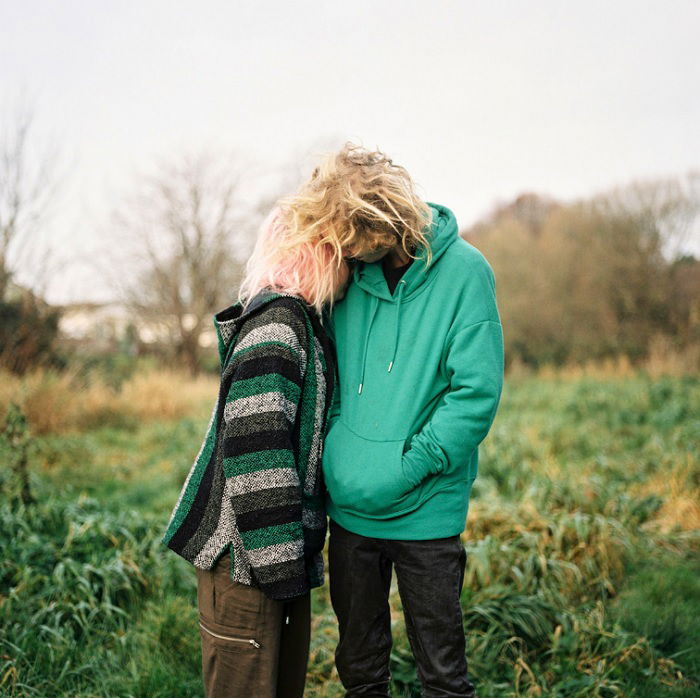
The Stateless
Statelessness is something few of us have ever contemplated. To be stateless is to be without an identity, at least in legal terms. Many stateless people have never left the land where they and their ancestors were born, yet they have no official residence.
That’s the subject of William Daniels ‘ eye-opening photo essay. It’s a documentary photography essay that’s global in scope. He doesn’t only focus on one group of people. He documents stateless people all over the world.
Daniels’ images are bright and energetic, but the pain and sorrow cuts through each photo. This photo essay example isn’t the easiest to digest. But it’s essential viewing for anyone interested in creating hard-hitting photo essays on political or humanitarian topics.
See William Daniel’s full photo essay here: The Stateless
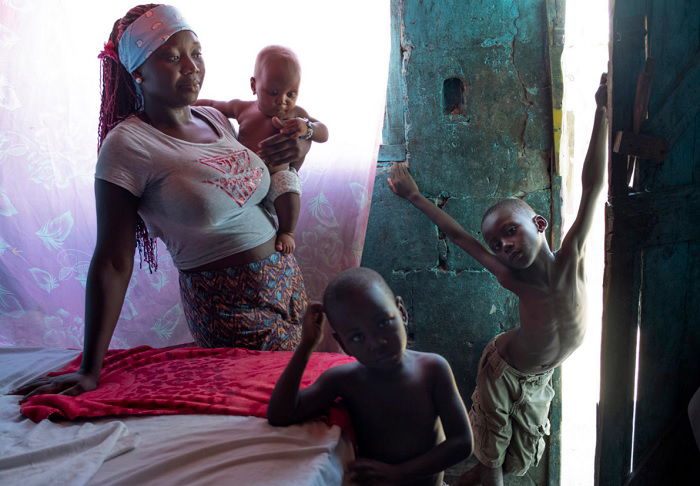
Professional climber, adventure, and photographer, Savannah Cummins has no fear when it comes to venturing into the unknown. She thrives when pushed to the limit, and that’s easy to see in this fantastic photo essay example.
Cummins’ essay explores the perils of live in the polar arctic, with her images a clear indication of how hard it is just to survive 109º F below.
This photo essay is the perfect example of how photographers need to get involved with their subjects to tell the best stories. There’s no sitting on the sidelines when you’re in freezing conditions. The cold affects you just as much as it does your subjects. But it’s about incorporating that into the essay, which Cummins does perfectly here.
See the full photo essay on Savannah Cummins’ website: 109º Below
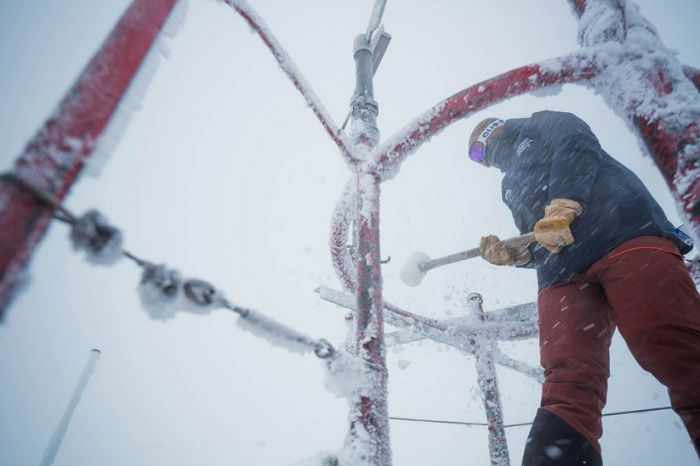
Photo Essay Ideas
We’ve seen some incredible photo essay examples in the section above. But you don’t have to travel to war zones or the arctic circle to create interesting photo essays. You can start small, focusing on your community, finding local stories that effect those close to you.
In this section, we look at photo essay ideas anyone can try. You don’t need fancy equipment or specialist skills. All you need is a camera and an interesting subject to capture.
Study a Family Member
When we say “start close to home,” we mean it. Every family has an interesting character or two. And many might have far more interesting lives than you are even aware of.
Grandparents are a good place to start. Their advanced years mean they’ve lived longer than others. They might have lived through and experienced some major events from modern history, such as protests, war, or economic depressions.
You don’t have to limit your focus to the elderly. Do a little digging, and you might find a family member who is currently living a life worth documenting.
You can take a series of portraits to capture the character. You can also create a more candid photo essay, capturing them at work or living their daily lives.
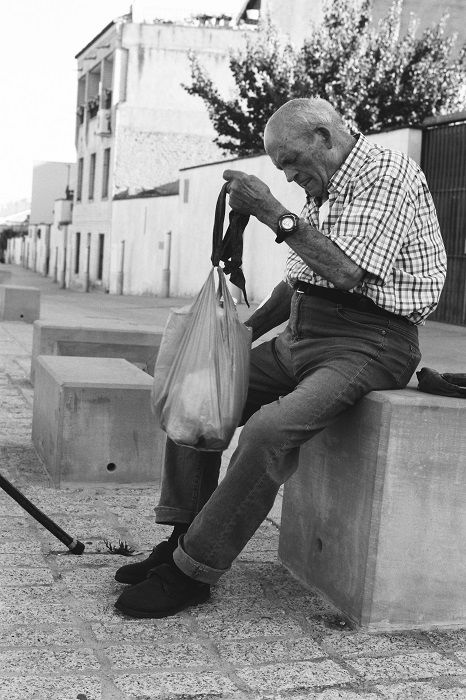
Step Out Your Front Door
Your neighbourhood, town, or village makes a great subject for a photo essay. You might be sick of where you live and not think it worth documenting. But it might be interesting to others.
Also, if you’ve lived there a long time, you’ll have an intimate knowledge of the area. Look for landmarks that hold a personal significance or places important to the local community.
The community could even be the focus on the photo essay. You could capture the people as well as the landscapes and spaces. After all, it’s how spaces and people interact that makes them significant.
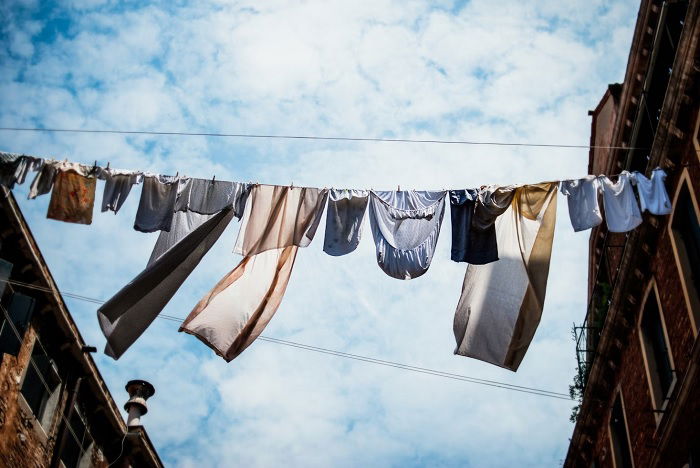
Take a Journey
Journeys are always interesting, even if they’re short. That’s why they make great subjects for photo essays.
You don’t have to travel far in order to make a great essay. You can go to a nearby town or leave your town for the journey. And you can travel however you see fit.
Driving gives you the freedom to go practically anywhere. But using public transport is another option, and can be more rewarding from a narrative point of view. There’s no mystery, with chance encounters and random occurrences. These bring your photo essay to life.
You don’t always need a specific destination. You can take each turn as it comes, deciding on the fly which way to go. Viewers will have a greater sense of adventure when looking at your images.
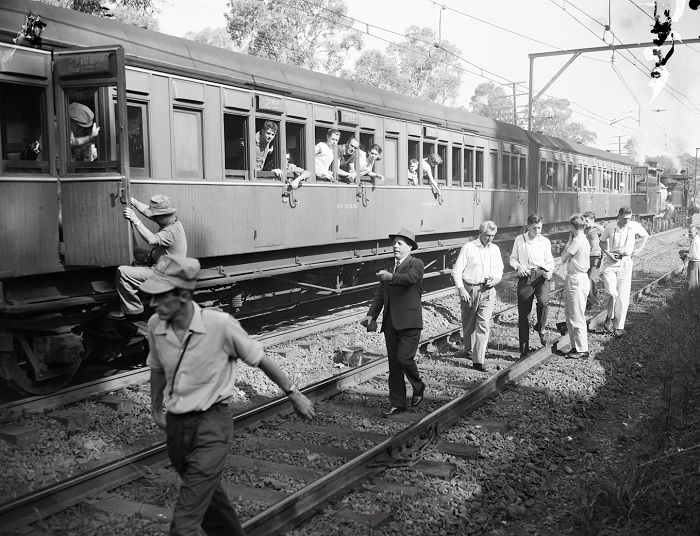
Photograph the Same Place
You don’t need to travel to crate an interesting visual essay. In fact, you can find one spot you find interesting and take several photographs of it over time.
The time frame is up to you. You can photograph that spot many time in one day. Or you can take one picture a day or one picture a week for several weeks.
The trick with this type of essay is that you need people to know it’s the same place in each photo. That means you have to take the picture from the exact same spot each time. Remember where you’re standing and work from there.
Alternatively, you can photograph the same place from multiple angles. That makes you’re photo essay a study of one particular space.
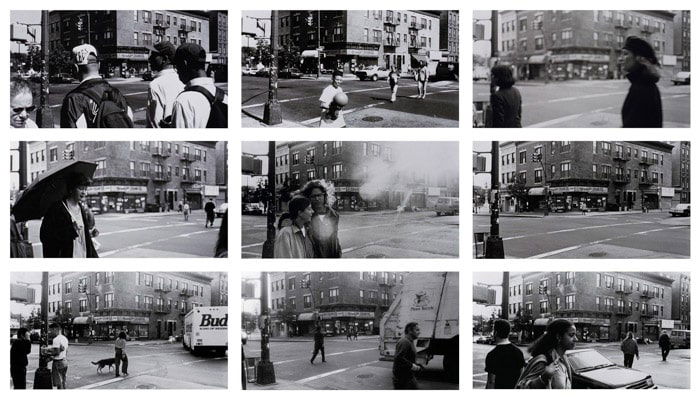
Watch Things Change
Similar to the photo essay idea above, you can focus on one thing over a period of time. That thing could be a place, but it could also be a person, plant, or inanimate objects. The only requirement is that this thing changes as time passes.
Photographing one place over time is a great idea if you live in a temperate climate. You can take pictures of that place as it changes over the course of the year, documenting the effects of the seasons.
Flowers and plants are a great choice for this type of photo essay. Some flowers have a short blooming period, so you can take a picture once a day for a week or so to monitor its growth and decline. Trees and other plants will need longer time periods.
The simplest version of this is to take a self-portrait every day. You might not thing there’s much difference between today’s self and tomorrow’s self, but when you view all the images in sequence the transformation can be incredible.
You can also put these images together to create a time-lapse video .
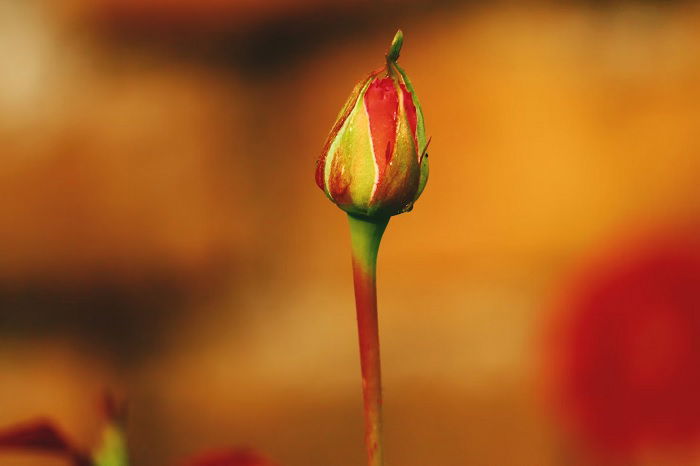
Follow a Protest
Protests often make excellent subjects for photo essays. They are full of interesting characters as well as colorful signs and placards. But they are also springs of emotion and tension. Most protests are peaceful, but more and more police in the West are cracking down on protesters, even if they are peaceful.
You don’t have to agree with the protesters or their cause. You might be staunchly opposed, but having some kind of emotional connection to the event will make your images more engaging for the viewer.
And don’t merely observe from the sidelines. Get involved for a more immersive essay. Speak to people involved, look for colorful characters. Keep your eyes peeled for counter-protesters or police. Look for signs of tension and focus in on those areas. Or, use your essay to show how peaceful protests can be.
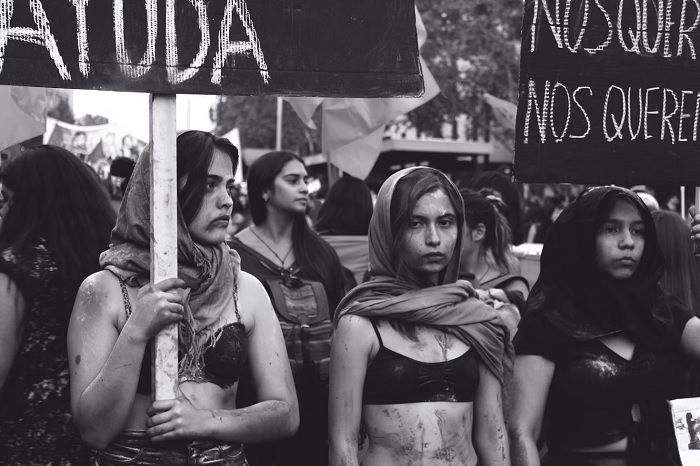
Document a Local Event
Events are another great subject for your photo essay. Whether it’s a community bake sale or a local music festival, you can capture the event with your camera.
As with protests, it helps to get involved as much as possible. Speak to organizers and volunteers and make yourself known to the people there. This will help you get better access to the event. It will also allow event-goers to relax with the camera around, helping you capture more candid images.
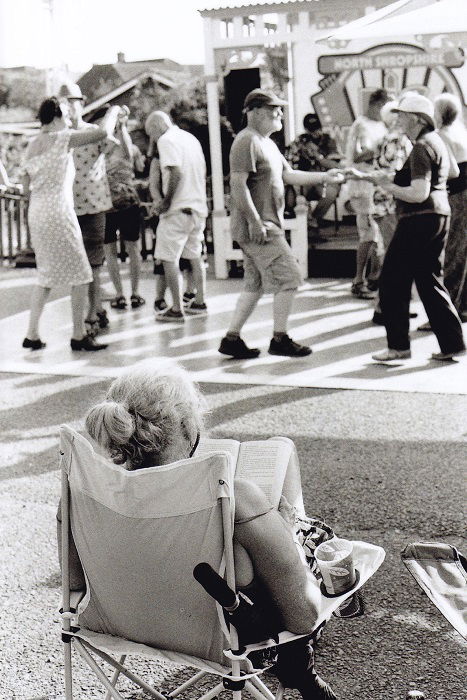
Explore Abandoned Places
Urban exploration, or Urbex, is where photographers explore abandoned places. It can be dangerous, so be careful and take the correct gear. But it can also be rewarding, allowing you to see forgotten places.
For a photography essay, you need to tell the story of these dilapidated buildings. Look for clues from the building’s past life. Find out what the building was and what it was used for in its heyday. Through this, you’ll learn about a wider history of the area.
Entering abandoned places is often illegal as it’s considered trespassing, so get permission to enter if you can. If not, be careful.
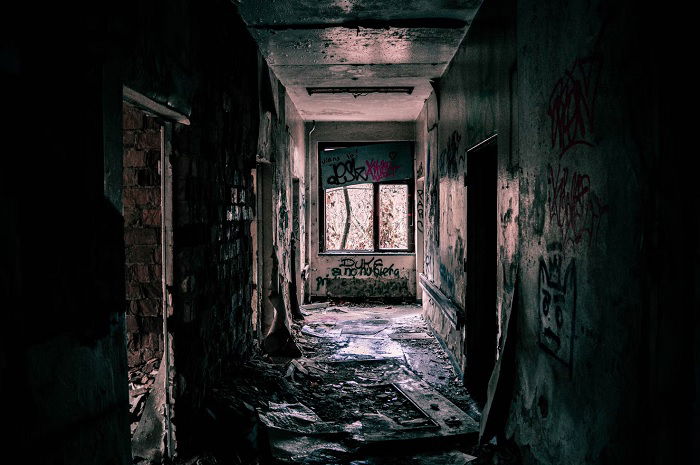
Tackle Big Subjects
Topics like climate breakdown, capitalism, or political corruption might seem out of reach for an amateur photographer. And while capturing melting ice caps or gaining access to the White House might be tricky, that does not mean these topics are out of bounds.
The trick is to look at how these big stories manifest in your local area. Is your town experiencing excessive drought or flooding due to climate Breakdown? Or is there a community center being closed down due to governmental budget cuts?
Stories like these make for powerful and engaging photo essays. They show how big, almost abstract subjects affect us on a personal level. They show that everyone is in the firing line, especially those at the community level.
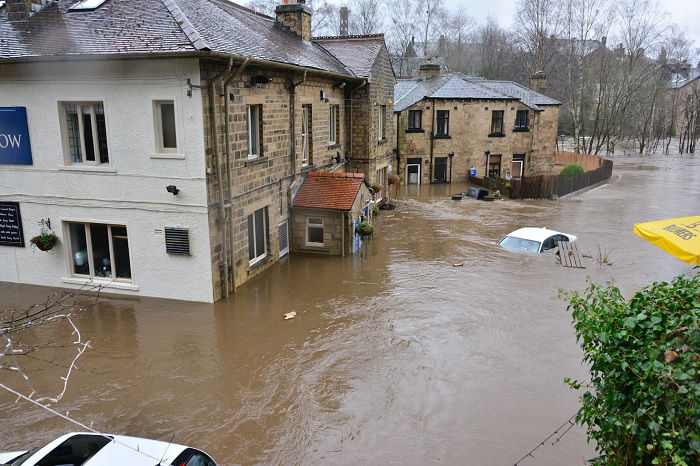
Appreciate Skill and Craft
This photo essay idea involved finding a skilled person to document. They can be anything from a carpenter or stone mason to a ballerina or cellist. All you need is someone with talent and skill. Then use your camera to create a photo essay about that person and what they do.
Make sure you have the person’s permission before you start taking pictures. Try to arrange some one-on-one time, so you can capture intimate pictures of them at their craft.
Take your time. Allow the other person to relax so they work in the way they would if the camera wasn’t there. Capture a mixture of shots including environmental portraits and closeups of them at work.
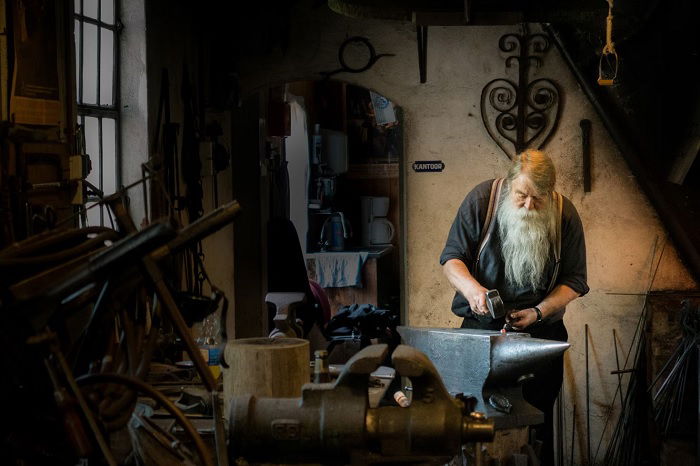
Look Behind the Scenes
Whether it’s a photoshoot, concert, or film set, people are always intrigued by what goes on behind the scenes. That’s why pulling back the curtain makes for such fun and interesting photo essays.
The tricky part is gaining access to the set or backstage area. You will have to reach out to the artists, managers, or directors beforehand. You can’t show up on the day and expect a backstage pass.
But once you’re in, it’s time to start snapping. There’s always a big cast of characters on any set. You have technicians, producers, and stylists. They all have interesting jobs, so try to capture them at work.
The key is to get involved without getting in the way. Learn to move with the crew and blend in as much as possible.
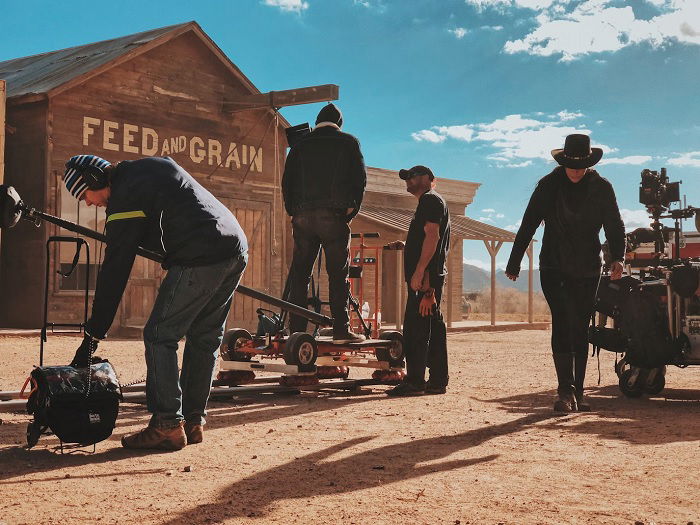
The photo essay is a brilliant and creative way to share stories and explore issues. A good photo essay should always say something. It isn’t just a collection of loosely linked photos. It’s a collection of connected photos that tell the story of someone, something, or a group of people or things.
Each photo essay example featured in the first section demonstrates how the pros construct their visual narrative. Those examples also show the wide range of topics photographers can explore with the photo essay format.
We explored the possible topics in the latter section on photo essay ideas. These ideas are accessible to anyone with a camera. You don’t need fancy equipment or a big budget. All you need is a camera and a photo essay idea that matches your interests.
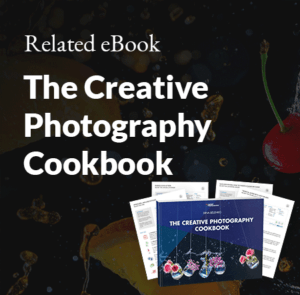
Popular Content

How to Create Magical Flour Photoshoots (8 Easy DIY Steps)
18 Immersive Photo Essay Examples & Tips
By Tata Rossi 13 days ago, Professional photography
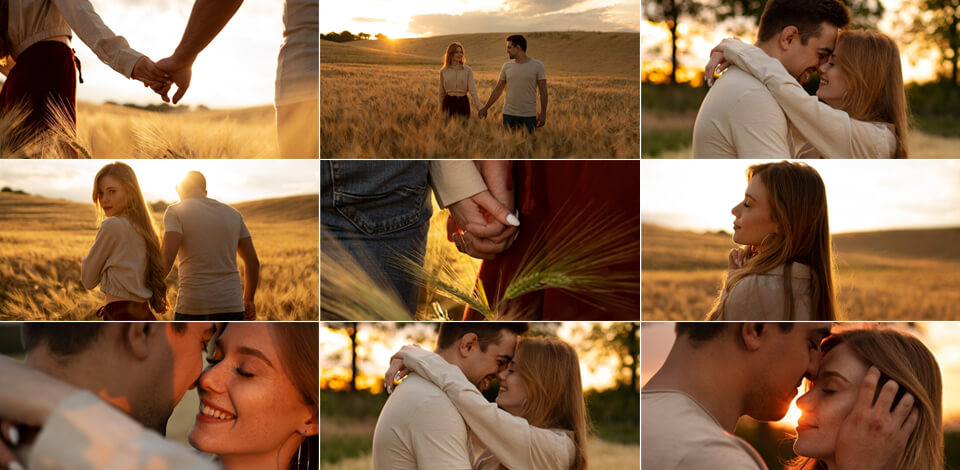
A photo essay tells a story or evokes emotion through a series of photographs. The essays allow you to be creative and fully explore an idea. Such essays exist in a variety of forms – from photos only to images with brief comments or written essays accompanied by shots. Choose a photo essay example that you can easily do based on your professional level and the equipment you use.
1. Protests
- View the “Resistance” photo essay by David Moore .
A great idea for photo essays for students is to shoot the protest to show its power. You can capture people with signs and banners to demonstrate what they are standing for. Besides, you can learn how to capture moving subjects. Use the best example of photo essay and don’t forget about angles, composition, and framing.
To create a photo essay , go up to the front and photograph the leader of the protesters walking forward. After that, go back to the end of the group to take pictures of families joining the protest. As a result, you will gain experience shooting big groups of people in motion.
2. Transformation
- View the “A Self-Portrait Every Day” photo essay by Noah Kalina .
This idea is all about capturing the way a person changes. You may take photos of a pregnant woman and then capture the same model with a child. By documenting the development of the child for several years, you can tell a great story in the form of a photo essay.
However, you can also create a photo essay about the transformation of different objects. For instance, you can create a time-lapse series to capture the history of a renovated building. While you will have to take a lot of similar photos to bring this idea to life, it will allow you to achieve an impressive result.
3. Local Event
- View the “Monday Marathon” photo essay by Quinn G. Perini .
Whether you are a resident of a large city or a small town, you can find an opportunity to visit a local event, like a marathon or a festival. This is a nice chance to follow modern photography trends and bring photo essay ideas to life.
You can capture the before-and-after stages of the event. Arrive earlier and take pictures of the preparation activities, then shoot the actual event starting with the official beginning.
Keep photographing even when the event is over and capture the cleaning up and disassembling processes.
4. Photowalk
- View the “Empty Campus” photo essay by Elise Trissel .
Explore the location where you live and find interesting objects to capture in the vicinity. Using the most interesting photo essay examples, you can decide how to make the best decisions. Don’t hurry and try to discover which angles you can use to capture the unique atmosphere of each place.
If you live in the city, you may capture architectural details, wide shots of busy streets, or just take photos of passersby and street signs. Think about the details that make every location unique. For instance, you can try capturing reflections to see how they allow you to see the city from an unusual angle. You can find reflections everywhere, so be sure to pay attention to mirrored buildings, puddles, and fountains.
5. Place Over Time
- View the “At Home in the Ozarks” photo essay by Kylee Cole .
If you want to document changes and show how the streets, buildings, and parks in your city change over time, select your favorite locations and start to visit them regularly to capture the way they look during different seasons.
- View the “Last Moments” photo essay by Ross Taylor .
You don’t necessarily have to focus on profound photo essay topics to evoke emotions. Capturing pets enjoying their worry-free and untroubled life seems like an easy but interesting activity.
Choose any animal – from a domestic bird to a dog, cat, or horse. For more emotional images, use such pet photography ideas when your pet is still a baby and recreate these shots when it is older or is in its final days.
7. Street Style
- View the Tribal Street Photography photo essay by Hans Eijkelboom .
People often express themselves with the help of clothes. The way passers-by on the streets are dressed may reflect the clothing style of a whole society. That’s why you can travel around the world and capture people’s outfits in various areas. When taking portrait photos in the streets, you can also include some of the surroundings to put them in the context.
You can ask people in the streets to pose for you or try to capture them in movement. Select a suitable location for taking photos and create a photo essay to document what kinds of people one can meet in this location. When doing urban photography , you should ask people for permission before taking photos of them. You can ask their contacts and send them your photos later.

8. Abandoned Building
- View the “Lost Collective” photo essay by Bret Pattman .
Old buildings are excellent architecture photography essay topics for students since you can capture a large number of elements. They allow you to imagine what a particular street looked like in the past. You may use a photo essay example for students as references.
Get approval before going in, but mind that such places are far from being totally safe. Bring various lenses: the macro lenses – for details and the wide-angle one – when you want to include many elements in one shot.
9. Alternative Lifestyles
- View the “Last Nomad Hippies” photo essay by Roberto Palomo .
Some people decide to lead a lifestyle that differs from the one generally accepted by society. Explore different areas and look for people with an unusual way of living. You can capture candid photos of regular people or take pictures of a person with an unusual hobby.
Take pictures of those, who reside in extraordinary conditions, representatives of various subcultures, or the LBGTQ community. These photo essay topics show other people that it is okay to go out of their comfort zone and run against the wind.
10. Social Issues
- View the “Juveniles in Prison” photo essay by Isadora Kosofsky .
The best photo essay examples for students are related to social issues, like unemployment, domestic violence, gender discrimination, and more. Address the topic carefully and look for a proper perspective.
Your shots may draw the people’s attention to a truly burning and relevant matter and have a stronger effect than any text.
11. Behind the Scenes
- View the “Follow Me” photo essay by Marius Masalar .
If you are going to visit an event, get ready to take some behind-the-scenes photos. For instance, you can document the preparations for a festival. Capture the work of the lead event planner and other professionals to tell the story of the festival from an unusual angle.
Alternatively, you can capture the events happening backstage during a drama production. Take pictures of actors and actresses when they are getting ready for the performance. Try capturing the emotions of the main lead and show how stage workers make final preparations. You can also document the work of designers and makeup professionals.
12. Landmarks
- View the “Volte-Face” photo essay by Oliver Curtis .
The pictures of landmarks are typically taken from a certain spot. One of the best photo essay ideas is to try shooting sights from various angles. You will also have an opportunity to improve your composition and your framing skills.
If you take a look at any pictorial essay example, you will see that the variety of perspectives is endless: through the streets, in the morning, afternoon, and evening, with a drone or including reflections.
• View the “Family” photo essay by Olivia Moore .
You can capture the way family members interact with each other and demonstrate the strong connection they share. In some cases, it makes sense to focus on capturing candid photos when doing family photography .
However, you may also opt for a different approach and focus on more difficult social topics. For instance, if you want to examine the issue of immigration, you can take pictures of a family from another country. In addition, you may show how families cope with other social issues, including poverty or unequal access to healthcare.
14. A Day in the Life
- View the “A Day in the Life of Carlos Gaytan” photo essay by Sandy Noto .
One of the best photo essays concepts is related to a day in a person’s life. The main character can be any person – a relative, family member, teacher, writer, or policeman.
People are generally interested in finding out facts about the lives and daily routines of others. The life of every human is incredible, especially if you learn it in more detail. This idea is especially suitable for taking documentary photos. For instance, you can select any photo essay sample you like and then capture a portrait of a person with the tools they use for their work.
15. Education
- View the “School Day” photo essay by Nancy Borowick .
You can also take great photos in the classroom capturing the interactions of teachers and their students. Avoid distracting them, as it will be easier for you to take natural shots. Using a variety of settings, you can make your photo essay more engaging. For instance, you may visit chemistry labs, capture teachers during a break, and take photos in other locations.
- View the “Meals From the Motherland” photo essay by James Tran .
You can also focus on specific meals to create a professional photo essay about food. To make it more attention-grabbing, try using different food photography ideas .
For instance, you can take photos of popular meals, capture the meals made by a specific person, or document cooking traditions in different countries. When taking photos in a restaurant, pay attention to the surroundings as well to capture the unique atmosphere of a place.
17. Capture the Neighbors
- View the “Our Neighbors” photo essay by Jeanne Martin .
Regardless of the place where you live, you have to establish good relationships with your neighbors. People who live nearby can also be great models for professionals who specialize in portrait photography. To implement this idea, make sure to capture people at home or in front of their houses to include some of the surroundings in your photo essay.
You will discover many interesting facts about people who live nearby. Shooting a photo essay will allow you to learn them better and establish a strong connection with them. This way, you can create a sense of community and discover what holds its members together.
18. Climate Change
- View the “Effects of Climate Change” photo essay by Sanya Gupta .
It is possible to a variety of photo story ideas bring to life examining the impact of climate change. Travel to places most affected by climate change, for instance, glaciers or famous resorts.
Capture the way the continuous drought has influenced the environment, animals, and the inhabitants. As an alternative, take pictures of environmentalist protests or inexhaustible energy sources.
Photo Essay Tips for Students
Explore your topic . An in-depth exploration of the main topic of your photo essay will help you find the best ideas for conveying your message. You can also find some sources for inspiration and useful materials. This stage allows you to learn more about your subject and select the best way of organizing your photo essay.
Create a storyboard . Using a storyboard, you can better understand what shots you need to take and what order can help you to tell a story in the best way. It will also allow you to create the right mood.
Take as many pictures as you can . To create a compelling story, make sure to take a lot of photos. It will allow you to choose the best pictures for your photo essay. Besides, you will always have backup photos if some of your pictures get damaged.
Experiment with different techniques . By changing the angle and using a variety of editing techniques, you can transform the way your photos look. When taking photos, try using different angles to capture the subject in the best way. You can also try changing the distance from the model, using black-and-white film, or employing a range of developing methods.
Add text . While some photographers create photo essays without text, it can still help you bring your point across more clearly and make it easier for a viewer to understand what you imply. By providing extra information, such as some facts, you can change the perception of your image. If you don’t know how to write descriptions, you can hire a professional writer to perform this task.
Enhance your photos . To edit your pictures, make sure to use professional photo editing software like Adobe Lightroom or Photoshop. Using the available tools, you can improve and change your photos. They allow you to fix issues with lighting, adjust WB, make colors richer, crop your pics to improve the composition, and perform other tasks. In case you need to edit your photos in a consistent style, you can use Photoshop Actions or Lightroom Presets.
In some cases, your pictures may require more advanced editing. If you see that your skills are insufficient or if you don’t have enough time, you can outsource the task of enhancing your photos to the FixThePhoto team. They will professionally enhance your pictures for a budget price. Their prices start from $1.50 per photo.
Want to Get a Professionally-Retouched Photo Essay?
The editing team at FixThePhoto specializes in delivering personalized and artistically enhanced photo essay, making sure to meet all your preferences. They can assist with different tasks, whether it's selecting the best shots or doing detailed retouching work.
Bonus Tools
To streamline your workflow and quickly edit your essay photos like a pro, make sure to apply these actions to your photos. Even if you use a photo essay example when taking pictures, you can utilize these actions to give your images a professional feel, tweak colors, edit lighting, and improve the overall look of your pics.
In this bundle, you will find actions created by experienced professionals who used recent photo enhancement trends to create convenient editing tools. Here, you will find a collection of brushes, patterns, overlays, and other effects for editing your photos in a realistic way.
- Photo essay examples
- Photo essay tips
- Bonus tools

- Video Editing Services
- Virtual Staging Services
- Outsource Photo Editing
- Retouching Tips
- Photo Editing Freebies
- Free Raw Images for Retouching
- Free Photoshop Actions
- Free Lightroom Presets
- Affiliate Program
- Privacy Policy
- Cookie Policy

Limited Time Offer! Save up to 50% Off annual plans.* View Plans
Save up to 50% Now .* View Plans
Advice for an Unforgettable Photo Essay
Six steps for turning your images into a memorable photo essay, from curating your best work to crafting a title.
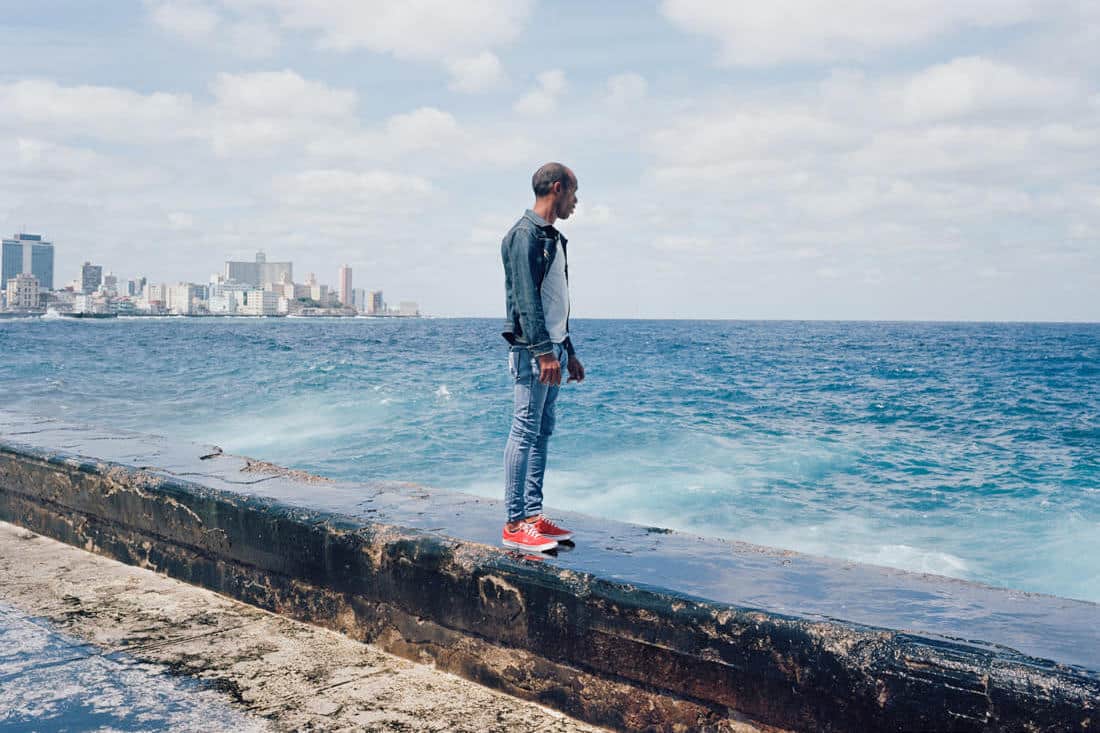
A man sits alone on a chair on the side of the road. We see him from above, surrounded by grey cobblestones neatly placed, a broken plastic chair, and some pylons scattered along the curb. A street cat wanders out of the frame and away from the man. He appears lonely, the only person inhabiting the place in which he seems so comfortably seated. As the eye wanders throughout the frame, however, the viewer discovers more: a vast city cast beyond the street and behind the man’s chair. This image closes Sarah Pannell’s photo essay Sehir , a quiet study of urban life.
Possibilities, discovery, and stories: these are some of the most effective elements of a photo essay. Collections of images can help produce a narrative, evoke emotion, and guide the viewer through one or more perspectives. A well-executed photo essay doesn’t rely on a title or any prior knowledge of its creator; it narrates on its own, moving viewers through sensations, lessons, and reactions.
Famous photo essays like Country Doctor by W. Eugene Smith or Gordon Parks’ The Harlem Family are acclaimed for showing a glimpse into the lives of the sick and impoverished. Other well-made photo essays offer a new way to look at the everyday, such as Peter Funch’s much-reposted photo series 42nd and Vanderbilt , for which Funch photographed the same street corner for nine years. As shown by these photographers’ experiences with the medium, a collection of photos can enliven spaces and attitudes. Strong photo essays can give voice to marginalized individuals and shine a spotlight on previously overlooked experiences.
You don’t necessarily need to be a documentary photographer to create a powerful photo essay. Photo essays can showcase any topic, from nature photography to portraiture to wedding shots. We spoke to a few photographers to get their perspectives on what makes a good photo essay, and their tips for how any photographer can get started in this medium. Here are six steps to follow to create a photo essay that tells a memorable story.
Choose a specific topic or theme for your photo essay.
There are two types of photo essays: the narrative and the thematic. Narrative photo essays focus on a story you’re telling the viewer, while thematic photo essays speak to a specific subject.
The most natural method for choosing a topic or theme for your photo essay is to go with what you know. Photograph what you experience. Whether that includes people, objects, or the things you think about throughout the day, accessibility is key here. Common topics or concepts to start with are emotions (depicting sadness or happiness) or experiences (everyday life, city living).
For photographer Sharon Pannen , planning a photo essay is as simple as “picking out a subject you find interesting or you want to make a statement about.”
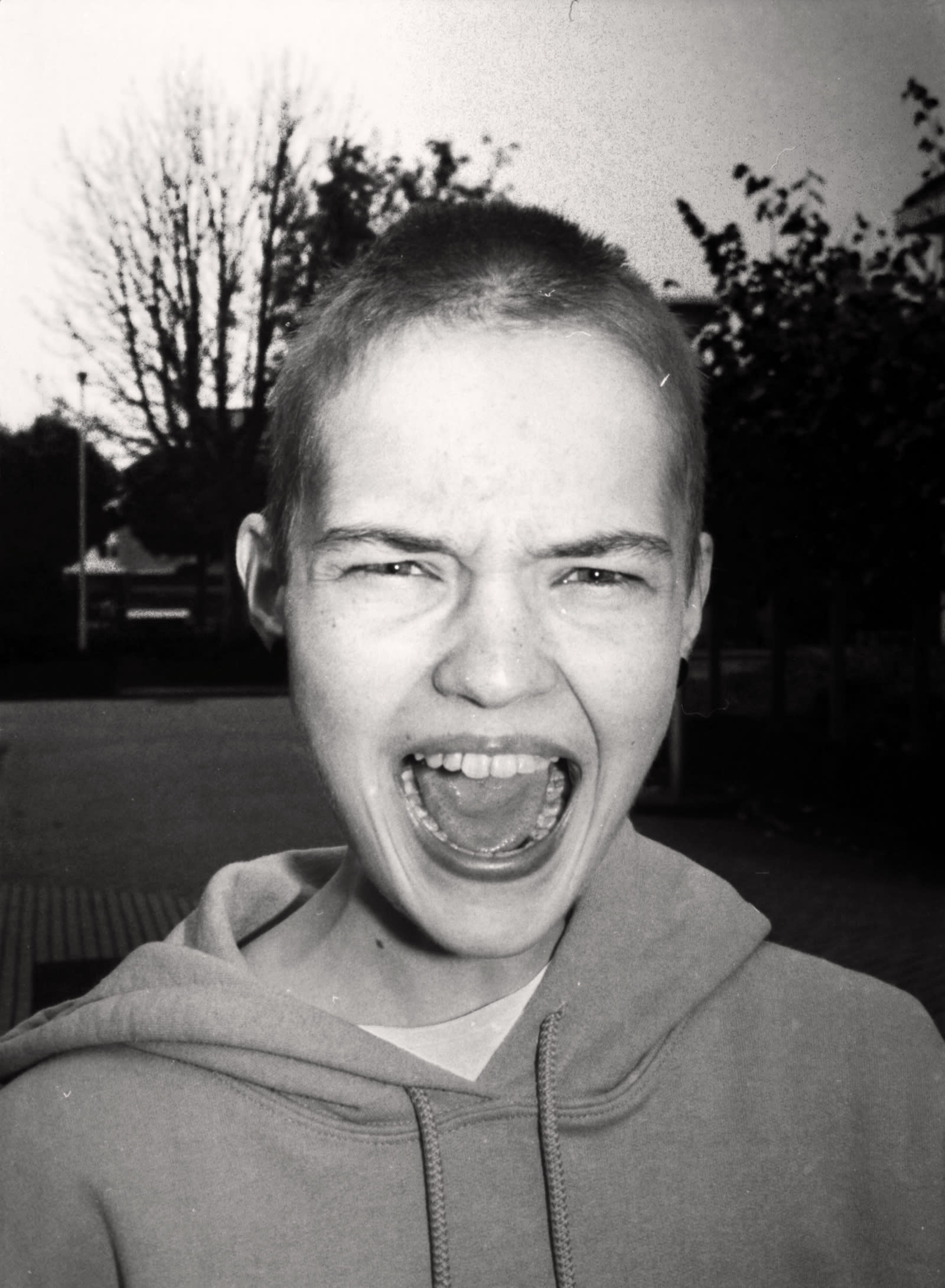
From Paper & Stories , a photo series by Sharon Pannen for Schön! Magazine.
Consider your photo subjects.
The subjects of your photographs, whether human or not, will fill the space of your photos and influence the mood or idea you’re trying to depict. The subject can determine whether or not your photos are considered interesting. “I always try to find someone that catches my eye. I especially like to see how the light falls on their face and how a certain aesthetic might add to their persona,” says photographer Victoria Wojtan .
While subjects and their interest factor are, well, subjective, when considering your subjects, you should ask yourself about your audience. Do other people want to see this? Is my subject representative of the larger idea my photo essay is trying to convey? Your projects can involve people you know or people you’ve only just met.
“Most projects I work on involve shooting portraits of strangers, so there’s always a tension in approaching someone for a portrait,” says photographer Taylor Dorrell . For Wojtan, that tension can help build trust with a subject and actually leads to more natural images “If there’s tension it’s usually because the person’s new to being photographed by someone for something that’s outside of a candid moment or selfie, and they need guidance for posing. This gives me the opportunity to make them feel more comfortable and let them be themselves. I tend to have a certain idea in mind, but try to allow for organic moments to happen.”
Aim for a variety of images.
Depending on your theme, there are a few types of photos you’ll want to use to anchor your essay. One or two lead photos should slowly introduce the viewer to your topic. These initial photos will function in a similar way to the introductory paragraph in a written essay or news article.
From there, you should consider further developing your narrative by introducing elements like portraiture, close ups, detail shots, and a carefully selected final photo to leave the viewer with the feeling you set out to produce in your photos. Consider your opening and closing images to be the most important elements of your photo essay, and choose them accordingly. You want your first images to hook the viewer, and you also want your final images to leave a lasting impression and perhaps offer a conclusion to the narrative you’ve developed.
Including different types of photos, shot at different ranges, angles, and perspectives, can help engage your viewer and add more texture to your series.
Says photographer Taylor Dorrell: “After I have a group of images, I tend to think about color, composition, the order the images were taken, the subject material, and relevance to the concept.”
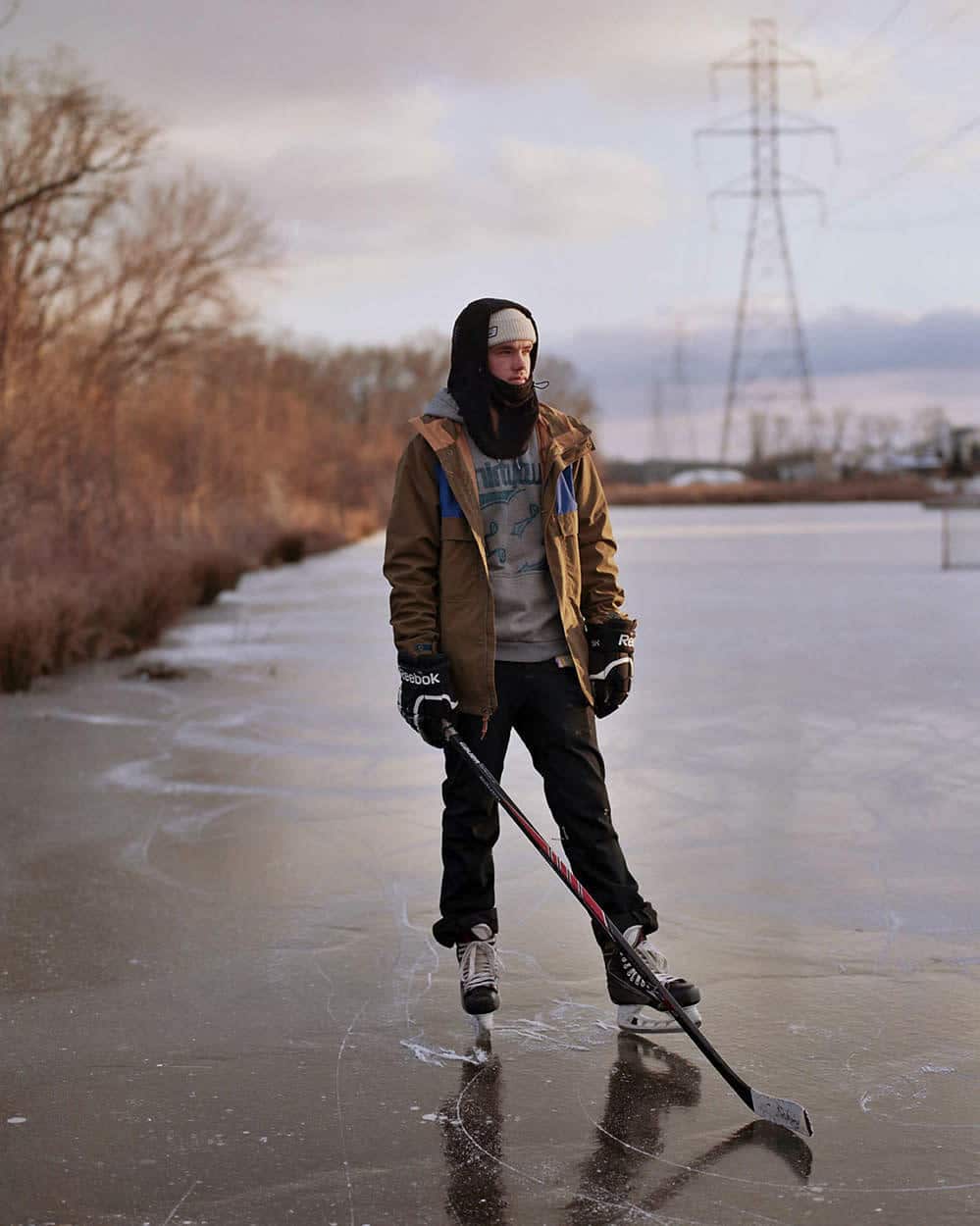
From Taylor Dorrell’s photo essay White Fences : “White Fences is an ongoing photo series that explores the theme of suburban youth in the United States, specifically in the midwest suburb New Albany, Ohio.”
Put your emotions aside.
Self-doubt can easily come into play when working with your own photography. The adage that we are our own worst critics is often true. It can be difficult to objectively select your strongest images when creating a photo essay. This is why putting together photo essays is such a useful practice for developing your curatorial skills.
“The most important part for me is getting outside opinions. I don’t do that enough, and have a bias in selecting images that might not be the most powerful images or the most effective sequence of images,” says Dorrell. Your own perception of a photograph can cloud your ability to judge whether or not it adds to your photo essay. This is especially true when your essay deals with personal subjects. For example, a photo essay about your family may be hard to evaluate, as your own feelings about family members will impact how you take and view the photos. This is where getting feedback from peers can be invaluable to producing a strong series.
Collecting feedback while putting your photo essay together can help you determine the strengths, weaknesses, and gaps within the collection of photos you’ve produced. Ask your friends to tell you their favorites, why they like them, and what they think you’re going for in the work you’ve created. Their opinions can be your guide, not just your own emotions.
Edit your photo selection.
Beyond post-production, the series of photos you select as your essay will determine whether you’ve executed your theme or narrative effectively. Can the photos stand alone, without written words, and tell the story you set out to? Do they make sense together, in a logical sequence? The perfect photo essay will give your audience a full picture of the narrative, theme, or essence you’re looking to capture.
A good method to use to cull your images down is to remove as many as half of your images straight away to see if your narrative is still as strong with fewer photos. Or, perhaps, deciding on a small number you’d like to aim for (maybe just five to ten images) and using this as a method to narrow down to the images that tell your story best.
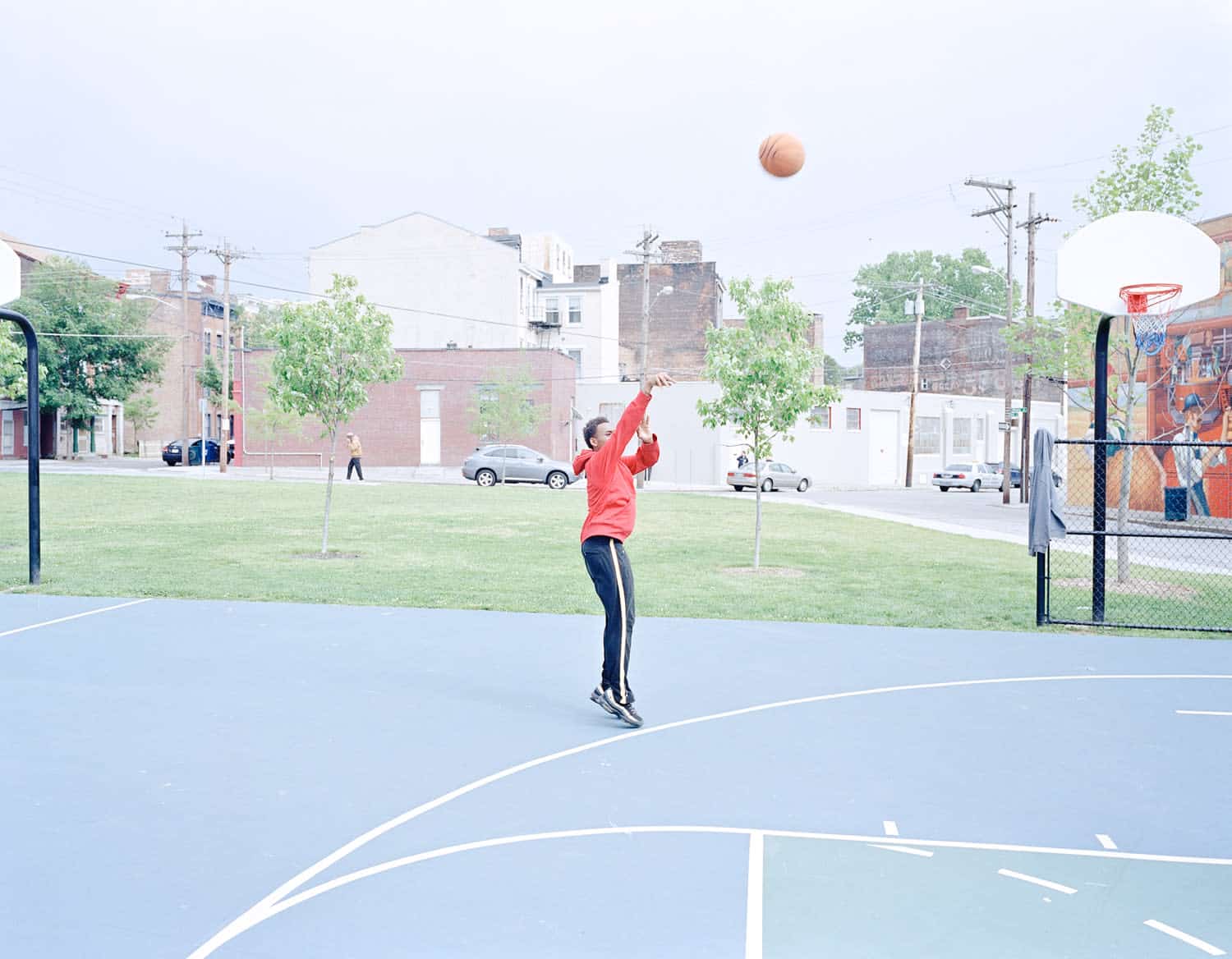
From Taylor Dorrell’s photo essay Over the Rhine , featured in Vice.
Give your photo essay a title, and add a concise written statement.
Finally, you’ll want to create a title and written statement for your photo essay. This will help position your work and can enable the viewer to fully understand your intention, or at least guide their perspective.
A solid written statement and title will be relevant to your topic, detail your primary objective, and introduce your point of view. It’s an opportunity to clarify your intentions to the viewer and ensure they walk away with a clear interpretation of your work. Depending on your photo essay, you may want to include several paragraphs of text, but even just one or two sentences of background can be enough to expand the viewer’s understanding of your work.
Consider if you’d like to add the written statement at the beginning of your essay to introduce it, or at the end as a conclusion. Either one can be impactful, and it depends how you’d like people to experience your work.
For his photo essay White Fences, excerpted above, Taylor Dorrell wrote only one sentence of introduction. But for his series Over the Rhine, Dorell included a longer written statement to accompany the work, which is “an ongoing photo series that seeks to explore the Cincinnati neighborhood of the same name and its surroundings. The series was started in response to the shooting of Samuel DuBose, an unarmed black man, by officer Ray Tensing of the University of Cincinnati Police, which happened July 19th, 2015.” Dorell’s text goes on to offer more background on the project, setting up the viewer with all the information they need to understand the context of the photo essay.
Depending on the motivations behind your photo essay and what sort of subject it depicts, a longer text may be necessary—or just a few words might be enough.
Looking for a place to share your photo essays with the world? Take a look at our guide to creating a photography website for tips on showcasing your photos online.
Cover image by Taylor Dorrell, from his photo essay Hurricane Over Sugar .
Contributor
View all posts

A Guide to Improving Your Photography Skills
Elevate your photography with our free resource guide. Gain exclusive access to insider tips, tricks, and tools for perfecting your craft, building your online portfolio, and growing your business.
Get the best of Format Magazine delivered to your inbox.

Enter the 3rd Annual Booooooom Photography Awards: Supported by Format
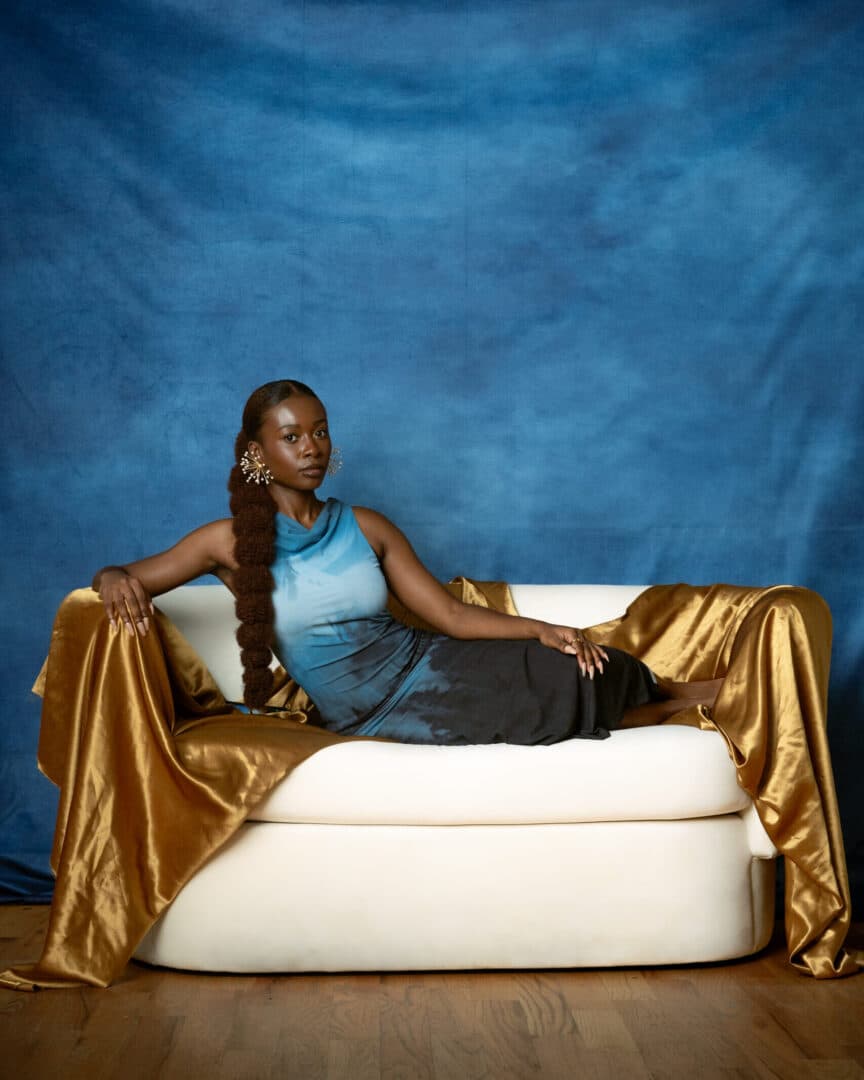
Nigerian American Photographer Damola Akintunde on Reflecting Self-Identity and Creating Narratives
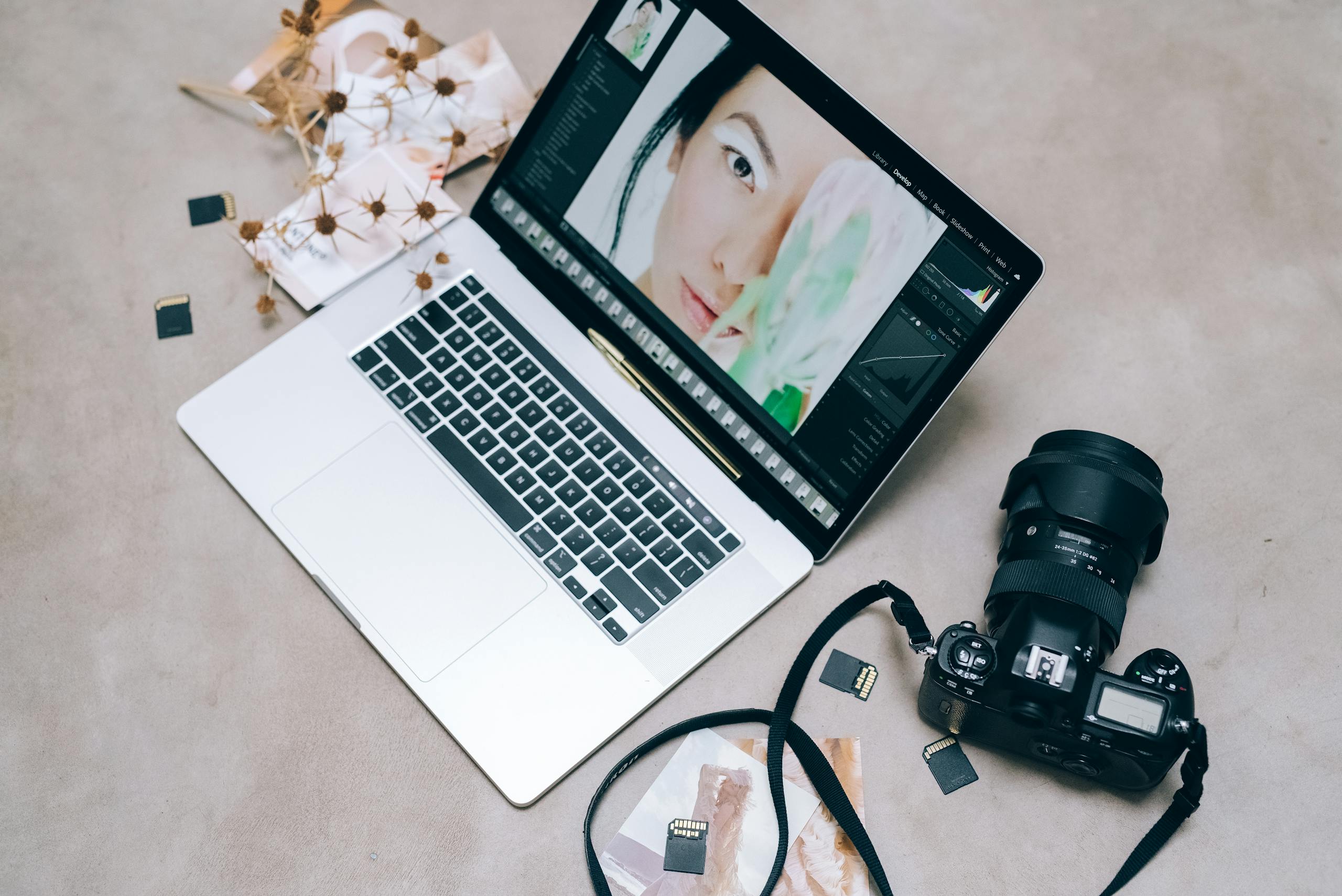
Mastering Photography Workflow: A Comprehensive Guide from Planning to Export

18 Best Online Photo Editors You Can Use for Free

A World of Art Inspiration: A Roundup of International Art Fairs
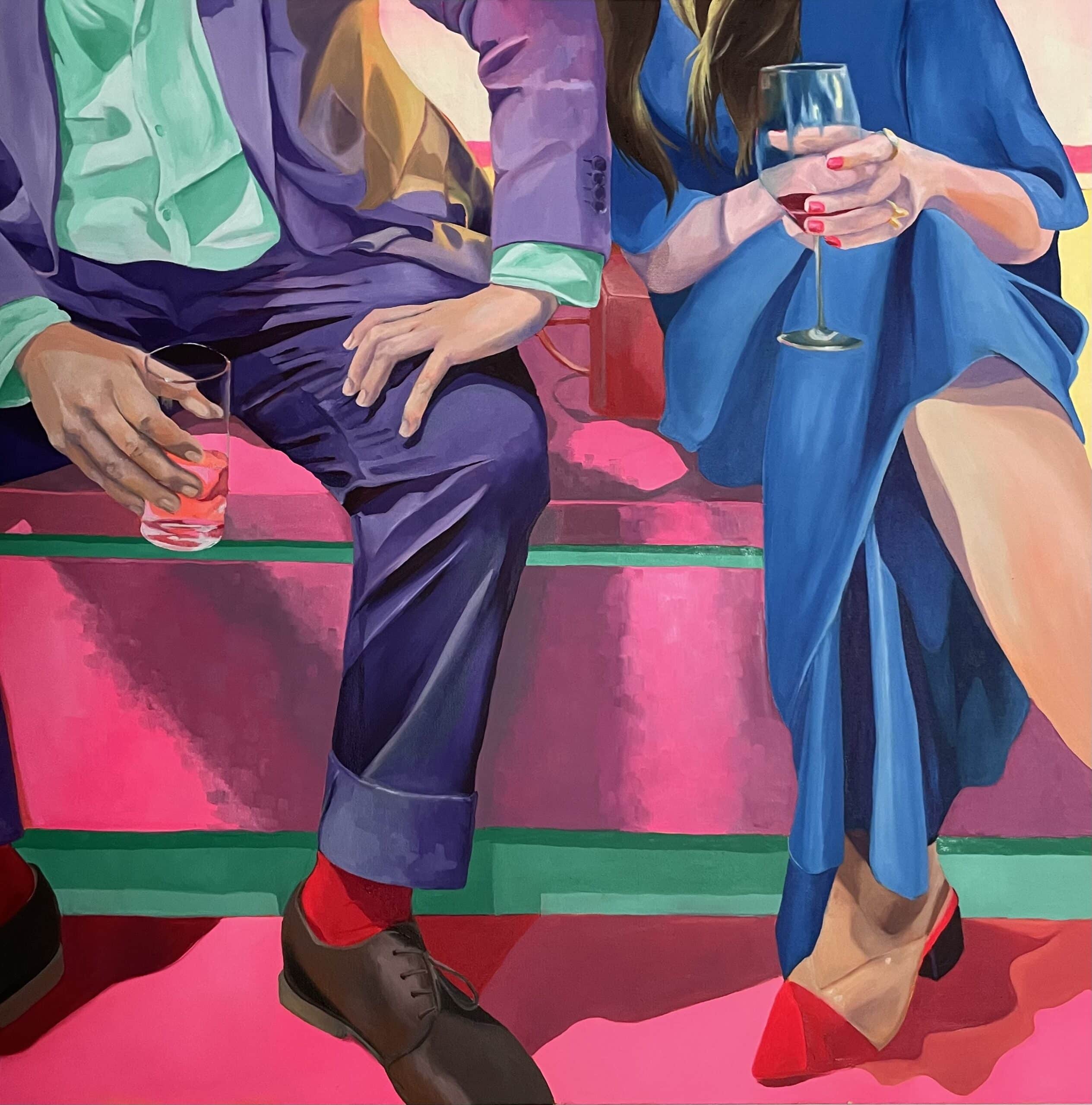
“This Is When We Were”—Selected Works by Erica Beyea.
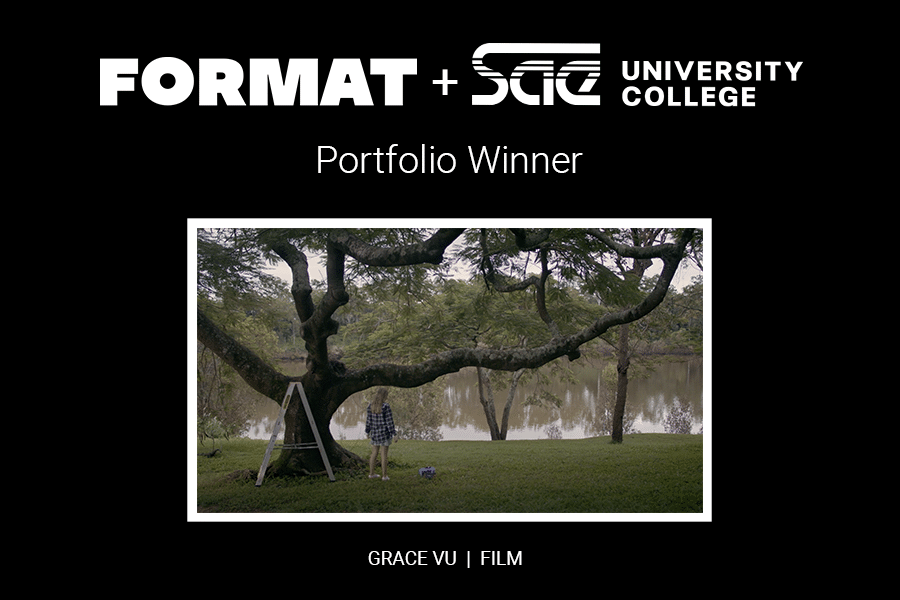
Format Portfolio 2024 Prizewinner in Partnership with SAE’s Creative Media Institute
*Offer must be redeemed by November 30th , 2024 at 11:59 p.m. PST. 50% discount off the subscription price of a new annual Pro Plus plan can be applied at checkout with code PROPLUSANNUAL, 38% discount off the price of a new annual Pro plan can be applied with code PROANNUAL, and 20% discount off the price of a new Basic annual plan can be applied with code BASICANNUAL. The discount applies to the first year only. Cannot be combined with any other promotion.
Unlock Your Creative Potential
Elevate your creative work with our exclusive starter package. Access invaluable insights, tools, and strategies to refine your craft, improve your skills, curate a stunning online portfolio, and advance your professional journey.

How to create an outstanding Photo Essay
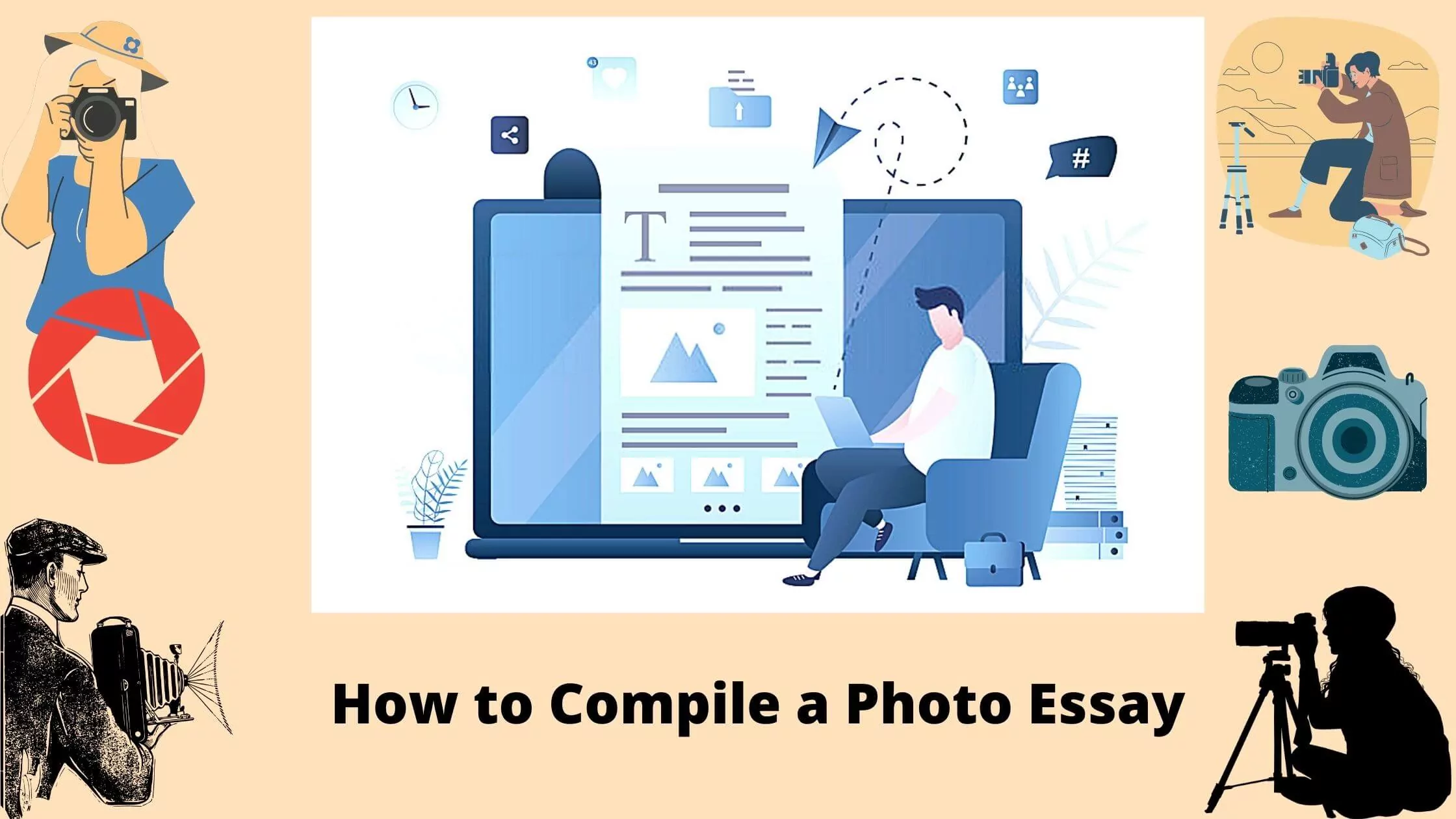
If you are working on your photo essay and would wish to know how to create a successful one, we have some tips, tricks, and techniques outlined in this article. With the sophistication of digital publishing, you need to be on your A-game when creating digital photos that tell a story.
As a custom essay writing service , our ultimate goal in this article is to guide you on creating a photo essay without straining. We like it when writing, and creativity is fun altogether. Therefore, we have outlined examples, classifications, and a framework that you can use when creating your photo essay.
This article also bears the definition of what a photo essay is. And although you could use this as a professional or a student, you can pay someone to do your essay on our website. When you do so, a polished essay writer will work with you in creating a good photo essay,
We have creatives with expertise, a knack for experimentation, critical thinking and creativity, and an insatiable urge to produce top content. If it sounds like you could use our help, let us know the best way we can assist you in creating a perfect photography essay.
If, however, all you need is insights to point you in the right direction, here is how to create a good photo essay without straining. Let’s explore!
What is a Photo Essay?
Visual storytelling appeals to everyone who has a sense of sight.
Unlike your typical essay in college, a photo essay is a project where you present a series of photographs or images to tell a story, share a narrative, or push a theme/agenda. Thus, a photo essay facilitates picture-led storytelling , which is a creative innovation in photojournalism.
It is also known as a photographic or picture essay. A great photo essay powerfully evokes emotions and appeals to the understanding of its intended audience without using words or with minimal words alongside the series of images.
A perfectly-created photo essay narrates a story using many photographs that take the viewer along your narrative journey. Indeed, it proves that a picture is worth a thousand words. In this case, since there are many pictures/images, you could say a photo essay is rich in words, flavor, and content, yet it does not have words.
Talking of photo essays, Ansel Adams is one of the revered and famous photo essayists. Other photo essayists include James Nachtwey, Eugene Smith, and Nancy Borowick .
How to Create a Photo Essay in a step-by-step format
Here is a step-by-step approach to follow to successfully create a compelling and engaging photo essay:
Step 1 – Do your Research
If you are to create an attractive and relevant photo essay, begin by researching the best framework to adopt. Look at what people are doing out there and find out how creatively you can do it better. There are inexhaustible ideas and concepts that you can explore when writing a photo essay. If you’ve not chosen a topic, thorough research can help you decide on a topic and handle it well.
Step 2 - Choose a theme for your photo essay
With the research, you can already identify a specific theme or narrative for your picture essay. Therefore, highlight the theme or narrative, write some notes about the direction you will tackle and how you will reach and satisfy your audience.
Step 2 – Choose a topic that aligns with the theme
Following the findings from your research, choose a great topic. You are not that lucky photo essayist who opportunistically happens upon a story and turns it into a brilliant photo essay. Therefore, you should choose an attractive, reasonable, short, and memorable topic. You are free to select any topic that interests you and one that you find fun to work on. Your chosen theme or narrative can help define the topic for your photo essay.
Step 3 – Pick your subjects
With the theme/narrative and the topic, you can then choose your subjects. These are the people, things, sceneries, or places of central focus in your photography essay.
The subjects are the ones that give your photo essay a voice, strengthen your narrative, and engage the audience.
Step 4 – Select your top images
Define the appropriate number of images that you intend to use when telling the story. For example, if you intend to leave the audience under suspense, choose which images to use and their order of appearance. Your photo essay project does not have to use all your images but the best.
The best way to integrate your theme, narrative, and subjects is to create a storyboard that helps you decide how to tell the story. Then, when you lay your ideas out, a storyboard helps you focus on what is essential, especially when you have little control over a given subject.
Step 5 – ask for insights and input from others
After creating the storyboard, choosing the photos, and writing a narrative or theme statement, you can share it with someone knowledgeable for critique. You should also invite views and comments from another person. Ensure that you give the entire photo cache to the person so that they can choose, then compare with your best photos and tweak your choice accordingly.
Step 6 – Write the captions and text
With everything set, write the accompanying content for your photo essay. As well, make sure you caption each photo to enhance your visual narrative. Nothing is cast in stone here because you can also drop using image captions. You can experiment with lighting, tone, color, composition, angles, and location so that the narrative flows. Also, don’t forget to create introductory messages and closing messages. You need to have your signature introductory and closing images well-decided.
Step 7 – Edit your work
Now that you have created a photo essay, it is now time to edit everything. You can ask for help or rest and do it when you are energetic and objective. If you want a skilled essay writer to write you an excellent narrative to post alongside your photo essay, you can always trust our essay website. We can also edit the narrative to maintain a good flow.
Step 8 – Publish/submit your work
If everything else is okay, convert the photo essay to the correct format and submit or publish it. Remember, photo essays can be a portion of a webpage, a webpage, a document, fashion publication, photo editorial, collage of images, or mixed media.
Helpful Tips when compiling your Photographic Essay
If you are on track to become a photo essayist, you need to grasp the most critical photo essaying tips, techniques, and tricks. Here is some best advice you could use to find a subject for your photo essay.
1. Try to tell a diverse and confident story
When you get out there to tell a story, make sure you do it most awesomely. Understand your target audience, do anything that will resonate with their needs, appeal to their emotions, logic, and thoughts, and leave them musing over your narrative. It is, therefore, vital that you consider what your key message will be and be confident when handling it in your photo essay.
2.Storyboard before building
Architects, surgeons, artists, engineers, you name the profession, all begin with either a sketch, blueprint or a plan to visualize the entire concept or creation before its actualization. In the real of photo essays, you have to be invested right from the beginning. Therefore, you need to create a storyboard that helps you to convert your vision, abstract thoughts, and ideas to a concrete plan that you can execute to succeed in your project. A storyboard also doubles as a shortlist for your photography project.
When storyboarding, you will notice that you take an outsider view, which helps you evaluate how every element fits into the larger picture – your narrative/theme. When doing it, you can discard otherwise burdensome but irrelevant content, which saves you time and leaves you to focus more.
Storyboarding is a critical, creative step when building a perfect photo essay as it ensures the flow to your viewers.
3. Have a visual structure
A contemporary photo essay follows a simple or basic framework that gives your theme direction and scope. Therefore, having a visual structure, marker, or framework helps you transform the photo series into a narrative. For instance, this Growing up young photo essay published in the BBC chooses to have quotes from the subjects running alongside the photos. Likewise, the picture essay done by photojournalist Stefanie Glinski titled One Month in Kabul Under Taliban rule – a photo essay has narrative and captions to further illustrate the themes, content, and narratives.
4. Have a variety of images
To write an exceptional photo essay, ensure that you have as many photos or images as possible. Assemble as much as you think you will need for the project, then use your ruthless photo editing skills to pick the best photos.
Although shedding content hurts, it’s the only best way to achieve the best piece. It is also better to be in a dilemma of which photos to use than wish that you included a specific shot. Having multiple shots ensures that everything is captured. Then compiling your photo series becomes easier.
5. Edit your photos well
When editing, do it ruthlessly. While you cannot be Annie Leibovitz, Stefanie Glinski, or Ansel Adams, you certainly have to up your game to be at par with them. You can either use a professional editor. Alternatively, you can edit your photos using Photoshop, Illustrator, or other image-editing software. Whatever you choose your struggle to be, ensure that you end up with high-quality photos that make sense to your theme or narrative. If you have to refine an image to remove blemish or flaws, use it as long as it ends up fine. Make sure that the focus of each photo is visible and that unwanted areas are cropped out. If you are editing on your own, edit the photos a few days after the shoot to have an objective mind when doing it.
6. Choose the top 10 images
You are not just going to lazily throw images and words all over a structure and have it for the best photo essay out there. Instead, you need to select quality photos that will tell your narrative. Be keen enough to ensure that any photo that makes it to the top 10 list is compelling and poignant. If you notice that you don’t have good equipment to produce or capture quality photos, don’t be afraid to pull in a professional photographer.
7. Use outside input to perfect your choice
When working on a photo essay project, you are not necessarily an island. The photo essayists we’ve mentioned work with teams. You equally need to get a trusted, visually active, and sophisticated individual, professional, or friend to help you.
Have them look at the photos you took and ask them to choose the best. As well, provide them with a written description of your narrative and ask them to select their 10 best photos.
Compare their choice with yours and if they differ, make a point of asking the reason. Listen keenly and tweak your narrative and choice as they most likely reflect what an audience would perceive from the photo essay.
8. Select the best photos from the best
Based on the reasons from your external source (friend, editor, or photographer), select the 10 best photographs to use in telling your story. As well, change the narration if there is a need to tweak it.
9. Write reasonable captions
For your final choice of 10 images, write a befitting caption that will help to enhance your visual narrative. You need to be concise, brief, and clear. If the photos have a strong or exciting background story you wish to run, have the narrative written as content alongside the photos.
However, if you feel like the images can stand alone without captions, don’t beat yourself over it; leave them out. After all, using captions is not a must.
Look at this example of Black Lives Matter Photo Essay (Link to external site).
Apart from the caption, you can add text that contains data, complex metrics, or maps to support your narrative. Using maps can help drive the point home.
10. Focus on the details
Yes, the devil is always in the details. When you eventually display your photo essay to an audience, everybody analyzes it their way. However, when you capture the details, you will take care of each perspective, judgment, and reasoning from your audience. Ensure that you place everything in context and that everything is up to date.
11. Make it fun
Unlike college essays that come with challenges, creating a photo essay should be fun. Therefore, enjoy every bit of the project. Doing so helps you to step up your game, inspire creativity, and relaxes your mind. There is nothing creative and innovative you cannot do in a photo essay with a let loose sort of spirit.
12. Set the scene
When telling a story through photography, you are equally writing your story. Therefore, ensure that you set a scene to capture the moment that appeals to your audience.
For the events that you have no control over, try as much as possible to take photos that match your narrative or theme.
13. Experiment more when taking photos
There is no single bullet to creating an outstanding photo essay. To achieve perfection, let your photo essay express your story in the best way it can. Therefore, you need to test filter effects, use fonts, adjust the visuals, check the contrast, adjust color, hue, and feel, and crop your photos well. With experimentation comes creativity and innovativeness, which birth perfection.
Classification of Photo Essays
In terms of classification, there are two general classes of photo essays where all the genres of photo essays fall. These classes are narrative and thematic.
1. Narrative Photo Essays
A narrative photo essay, as the name suggests, tells a specific story. But, mainly, these types of photo essays tend to tell a peculiar and more direct story.
Unlike thematic photo essays, narrative photo essays give less freedom to the photo essayist. The use of text is to have some sense of completion to the story.
For instance, the 28 Days in Afghanistan by Andrew Quilty published in the SBS is a narrative photo essay that documents the photographer’s experience in the war-torn nation using both text and unadulterated photos.
The picture essay by photojournalist Stefanie Glinski titled One Month in Kabul Under Taliban rule – a photo essay also falls under this category as it highlights her one-month encounter in Kabul.
2. Thematic photo Essays
Thematic photo essays are topic-specific. For example, they can be on politics, pollution, police brutality, global pandemic, poverty, crime, etc.
You have the freedom of choosing the subjects, location, and you do not necessarily have to incorporate text.
An example of a thematic photo essay is the “ They call us bewitched ” picture essay published in the Guardian. We also bumped into the Olympics Photos: Emotion runs high by the NBC News, which we find as an excellent thematic photo essay. Next, look at this Hurricane Katrina photo essay. It is thematic in the sense that it focuses on a natural disaster. Finally, if you want more examples, this photo essay titled “ From Trayvon Martin to Colin Kaepernick ” details the theme of Black Lives Matter/ police brutality.
Typical Photo Essay Examples/Genres to inspire your creativity
- The daily life photo essay – A Day-in-the-life photo essay tells a story about the day-to-day life of a given subject. It could be a lawyer, president, celebrity, farmer, industrialist, pope, student, etc. most of these photographic essays evoke emotions and help the audience enter into the subject's world.
- Transitioning through life photo essay – These are essays that detail photos of how people transform through life. It can be a photo of a celebrity, president, farmer, or famous person since they were young to date.
- Special events photo essays – As the name suggests, these are photo essays on special events, festivities, and occurrences. The events can be weddings, burials, art exhibitions, car shows, auction events, or celebrations. They have very elaborate and relatable background objects that connect to the main idea.
- Family photo essays – These can be photo essays on family members. You can include photos that show how the family has grown or detailing the family tree. They can also be family business photos that detail the leaders assigned roles to family businesses.
- Protest photo essays – These are thematic photo essays that detail how protests occurred and paint a clear picture of the theme of such protests as the Black Lives Matter protests. When creating a protest photo essay, you should have information about the particular protest. Focus on incidents and protests that occurred in history.
- Sports photo essays – Sports essays can be on sports events such as Olympics, Wimbledon, football leagues, or about sportsmen and women. For instance, the Skysports’ picture essay on Diego Maradona titled Diego Maradona: Images of a football Icon .
- Medical Photo Essays – Organizations such as WHO , Universities , or CDC have various examples of medical photo essays. These visual illustrations focus on medical research, medical practice, diseases, and medical breakthroughs.
- Scientific Photo Essays – Like medical essays, these photo essays detail scientific encounters, breakthroughs, inventions, etc.
- Celebrity photo essays – You can create a photo essay on a celebrity.
- Political photo essays are photo essays that capture and narrate political events, history, and news in a series of photographs and narratives. It could be about leftist and rightist politics or geopolitics as well as policy-making.
- War photo essays – Captures the critical and significant elements of conflict, war, and peace. There are many samples online.
- Timelapse photo essays – These are transformational photo essays that capture the changes of a subject through time. They might take longer to develop and can be on buildings, estates, cities, trees, or landscapes.
- Relationship photo essays – This photo essay genre captures the interaction between people, families, and loved ones. It is the most common assignment in journalism class. It offers an excellent chance to capture emotions like love, family, and friendship.
- Poverty photo essays – This genre of photo essays captures poverty from the standpoint of the subject. They can contain infrastructure, housing, amenities, food, water, etc. They are very emotional and can use narratives. They are the same as drought photo essays that capture how the drought has ravaged a geographic region of interest.
- City photo essays – These are photographic essays that capture a city's feel, life, and pleasures. They are thematic in nature and allow you to focus on specific areas, moods, and feeling that such places evoke.
- Education photo essays – Details issues in education. For instance, it can be a photo essay showing the disparity in access, challenges in education, or infrastructure in education. An example is The Many Faces of Learning, published in the Stanford Social Innovation Review. Another one is Embracing Education , published by the Lutheran World Federation.
As long as you can think of any topic, there is always a picture or photo essay genre where it can fall under. Remember, you can be asked to create a photo essay on a Word Document or PDF for class, which is where you get the chance to display your prowess and creativity.
Common Photo Essay Examples
Here are the famous photo essays that you can draw inspiration from:
- Various American Natural Sites by Ansel Adams
- “Everyday” by Noah Kalina
- “Signed, X” by Kate Ryan
- “The Vietnam War” by Philip Jones Griffiths
- “The Great Depression” by Dorothea Lange
Structure/Anatomy of a Photo Essay
Here is a blueprint or skeleton of how a basic photo essay can look like
Introductory text/content
This is where you type the text that explains or introduces the photo essay to your audience.
Signature Image
This is the strongest image that has a visual impact on the story you are running. It should be an image that invites the viewers to your story to be interested in looking further. In simple terms, this is your window, attention grabber, or icon; make it count.
This is the picture of a key player or the main subject of your story. You must ensure that the foreground and background elements reinforce the theme or narrative.
Where the subject is caught in real moments, such as in environmental portraits, is reportedly more compelling. You can use a series of posed portraits as well.
Overall wider view
This is the photograph that gives the viewers a sense of the place or part of the place where the story happens. You use such images to create a scene. It can also be a series of detailed images bundled together to set the scene.
Here, you need to follow up with a photograph that explains the finer details. The photo can be abstract but eye-catching in the sense that it draws the attention of the audience. It should be an image that reveals to the audience some aspect that is otherwise missed in a wider shot. You are allowed to use series of small detail photos as a mosaic in one image .
When defining an action, look for a photograph that shows the main theme in your story. For instance, if it is a Black Lives Matter protest, focus on a photo that captures banners, police, and protesters. Specifically, focus on the most poignant or dramatic images that capture people interacting with one another. You can as well capture gestures or moments that amplify the visual narrative you want to communicate.
Closing Photo and text
This is the powerful closing photograph that lets your audience ponder more about your visual narrative. You can follow it with a text highlighting the thoughts you want the audience to reason with as they come to the end of your photo essay.

Gradecrest is a professional writing service that provides original model papers. We offer personalized services along with research materials for assistance purposes only. All the materials from our website should be used with proper references. See our Terms of Use Page for proper details.

The leading authority in photography and camera gear.
Become a better photographer.
12.9 Million
Annual Readers
Newsletter Subscribers
Featured Photographers
Photography Guides & Gear Reviews

How to Create an Engaging Photo Essay (with Examples)
Photo essays tell a story in pictures. They're a great way to improve at photography and story-telling skills at once. Learn how to do create a great one.
Learn | Photography Guides | By Ana Mireles
Shotkit may earn a commission on affiliate links. Learn more.
Photography is a medium used to tell stories – sometimes they are told in one picture, sometimes you need a whole series. Those series can be photo essays.
If you’ve never done a photo essay before, or you’re simply struggling to find your next project, this article will be of help. I’ll be showing you what a photo essay is and how to go about doing one.
You’ll also find plenty of photo essay ideas and some famous photo essay examples from recent times that will serve you as inspiration.
If you’re ready to get started, let’s jump right in!
Table of Contents
What is a Photo Essay?
A photo essay is a series of images that share an overarching theme as well as a visual and technical coherence to tell a story. Some people refer to a photo essay as a photo series or a photo story – this often happens in photography competitions.
Photographic history is full of famous photo essays. Think about The Great Depression by Dorothea Lange, Like Brother Like Sister by Wolfgang Tillmans, Gandhi’s funeral by Henri Cartier Bresson, amongst others.
What are the types of photo essay?
Despite popular belief, the type of photo essay doesn’t depend on the type of photography that you do – in other words, journalism, documentary, fine art, or any other photographic genre is not a type of photo essay.
Instead, there are two main types of photo essays: narrative and thematic .
As you have probably already guessed, the thematic one presents images pulled together by a topic – for example, global warming. The images can be about animals and nature as well as natural disasters devastating cities. They can happen all over the world or in the same location, and they can be captured in different moments in time – there’s a lot of flexibility.
A narrative photo essa y, on the other hand, tells the story of a character (human or not), portraying a place or an event. For example, a narrative photo essay on coffee would document the process from the planting and harvesting – to the roasting and grinding until it reaches your morning cup.
What are some of the key elements of a photo essay?
- Tell a unique story – A unique story doesn’t mean that you have to photograph something that nobody has done before – that would be almost impossible! It means that you should consider what you’re bringing to the table on a particular topic.
- Put yourself into the work – One of the best ways to make a compelling photo essay is by adding your point of view, which can only be done with your life experiences and the way you see the world.
- Add depth to the concept – The best photo essays are the ones that go past the obvious and dig deeper in the story, going behind the scenes, or examining a day in the life of the subject matter – that’s what pulls in the spectator.
- Nail the technique – Even if the concept and the story are the most important part of a photo essay, it won’t have the same success if it’s poorly executed.
- Build a structure – A photo essay is about telling a thought-provoking story – so, think about it in a narrative way. Which images are going to introduce the topic? Which ones represent a climax? How is it going to end – how do you want the viewer to feel after seeing your photo series?
- Make strong choices – If you really want to convey an emotion and a unique point of view, you’re going to need to make some hard decisions. Which light are you using? Which lens? How many images will there be in the series? etc., and most importantly for a great photo essay is the why behind those choices.
9 Tips for Creating a Photo Essay
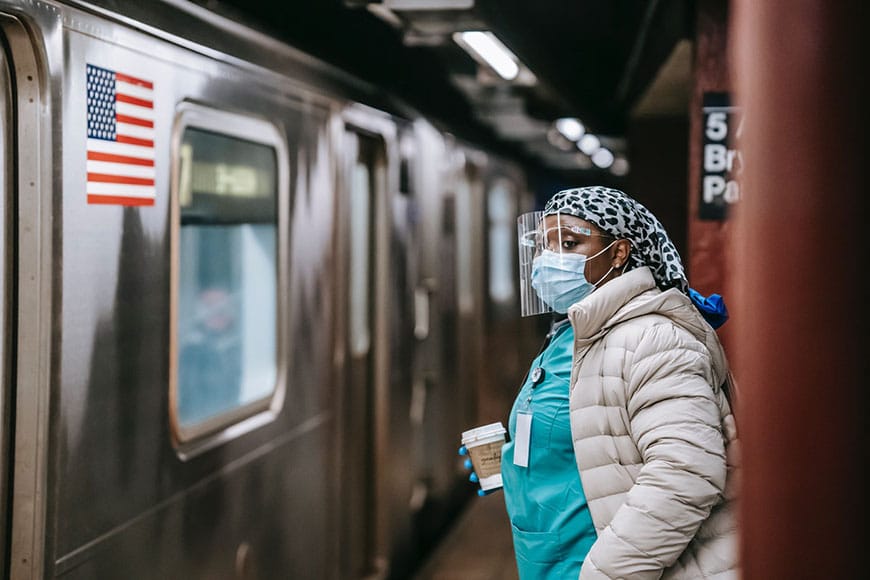
Credit: Laura James
1. Choose something you know
To make a good photo essay, you don’t need to travel to an exotic location or document a civil war – I mean, it’s great if you can, but you can start close to home.
Depending on the type of photography you do and the topic you’re looking for in your photographic essay, you can photograph a local event or visit an abandoned building outside your town.
It will be much easier for you to find a unique perspective and tell a better story if you’re already familiar with the subject. Also, consider that you might have to return a few times to the same location to get all the photos you need.
2. Follow your passion
Most photo essays take dedication and passion. If you choose a subject that might be easy, but you’re not really into it – the results won’t be as exciting. Taking photos will always be easier and more fun if you’re covering something you’re passionate about.
3. Take your time
A great photo essay is not done in a few hours. You need to put in the time to research it, conceptualizing it, editing, etc. That’s why I previously recommended following your passion because it takes a lot of dedication, and if you’re not passionate about it – it’s difficult to push through.
4. Write a summary or statement
Photo essays are always accompanied by some text. You can do this in the form of an introduction, write captions for each photo or write it as a conclusion. That’s up to you and how you want to present the work.
5. Learn from the masters
Making a photographic essay takes a lot of practice and knowledge. A great way to become a better photographer and improve your storytelling skills is by studying the work of others. You can go to art shows, review books and magazines and look at the winners in photo contests – most of the time, there’s a category for photo series.
6. Get a wide variety of photos
Think about a story – a literary one. It usually tells you where the story is happening, who is the main character, and it gives you a few details to make you engage with it, right?
The same thing happens with a visual story in a photo essay – you can do some wide-angle shots to establish the scenes and some close-ups to show the details. Make a shot list to ensure you cover all the different angles.
Some of your pictures should guide the viewer in, while others are more climatic and regard the experience they are taking out of your photos.
7. Follow a consistent look
Both in style and aesthetics, all the images in your series need to be coherent. You can achieve this in different ways, from the choice of lighting, the mood, the post-processing, etc.
8. Be self-critical
Once you have all the photos, make sure you edit them with a good dose of self-criticism. Not all the pictures that you took belong in the photo essay. Choose only the best ones and make sure they tell the full story.
9. Ask for constructive feedback
Often, when we’re working on a photo essay project for a long time, everything makes perfect sense in our heads. However, someone outside the project might not be getting the idea. It’s important that you get honest and constructive criticism to improve your photography.
How to Create a Photo Essay in 5 Steps
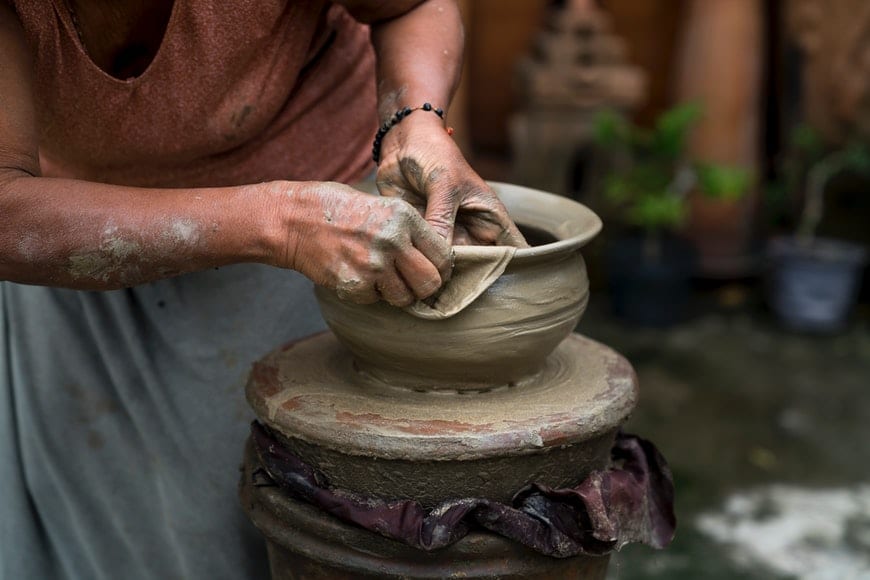
Credit: Quang Nguyen Vinh
1. Choose your topic
This is the first step that you need to take to decide if your photo essay is going to be narrative or thematic. Then, choose what is it going to be about?
Ideally, it should be something that you’re interested in, that you have something to say about it, and it can connect with other people.
2. Research your topic
To tell a good story about something, you need to be familiar with that something. This is especially true when you want to go deeper and make a compelling photo essay. Day in the life photo essays are a popular choice, since often, these can be performed with friends and family, whom you already should know well.
3. Plan your photoshoot
Depending on what you’re photographing, this step can be very different from one project to the next. For a fine art project, you might need to find a location, props, models, a shot list, etc., while a documentary photo essay is about planning the best time to do the photos, what gear to bring with you, finding a local guide, etc.
Every photo essay will need different planning, so before taking pictures, put in the required time to get things right.
4. Experiment
It’s one thing to plan your photo shoot and having a shot list that you have to get, or else the photo essay won’t be complete. It’s another thing to miss out on some amazing photo opportunities that you couldn’t foresee.
So, be prepared but also stay open-minded and experiment with different settings, different perspectives, etc.
5. Make a final selection
Editing your work can be one of the hardest parts of doing a photo essay. Sometimes we can be overly critical, and others, we get attached to bad photos because we put a lot of effort into them or we had a great time doing them.
Try to be as objective as possible, don’t be afraid to ask for opinions and make various revisions before settling down on a final cut.
7 Photo Essay Topics, Ideas & Examples
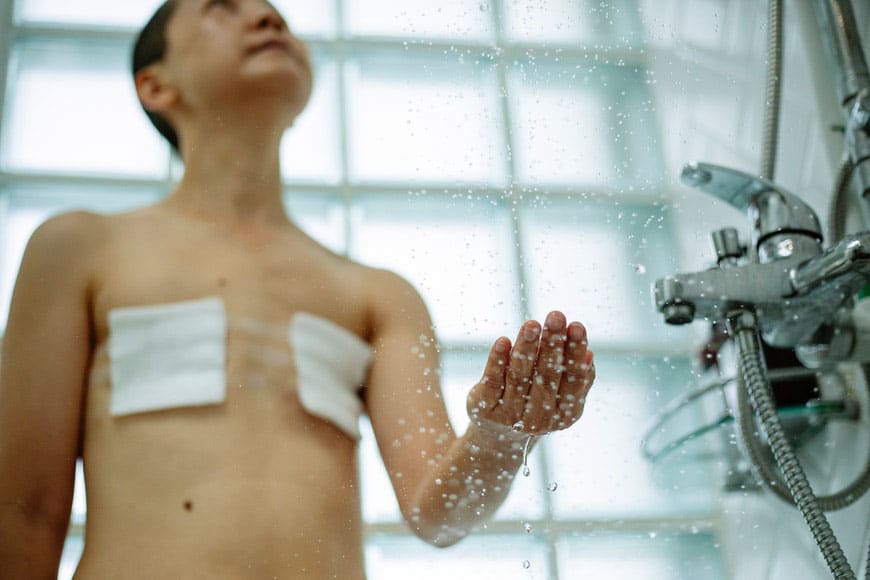
Credit: Michelle Leman
- Architectural photo essay
Using architecture as your main subject, there are tons of photo essay ideas that you can do. For some inspiration, you can check out the work of Francisco Marin – who was trained as an architect and then turned to photography to “explore a different way to perceive things”.
You can also lookup Luisa Lambri. Amongst her series, you’ll find many photo essay examples in which architecture is the subject she uses to explore the relationship between photography and space.
- Process and transformation photo essay
This is one of the best photo essay topics for beginners because the story tells itself. Pick something that has a beginning and an end, for example, pregnancy, the metamorphosis of a butterfly, the life-cycle of a plant, etc.
Keep in mind that these topics are linear and give you an easy way into the narrative flow – however, it might be difficult to find an interesting perspective and a unique point of view.
- A day in the life of ‘X’ photo essay
There are tons of interesting photo essay ideas in this category – you can follow around a celebrity, a worker, your child, etc. You don’t even have to do it about a human subject – think about doing a photo essay about a day in the life of a racing horse, for example – find something that’s interesting for you.
- Time passing by photo essay
It can be a natural site or a landmark photo essay – whatever is close to you will work best as you’ll need to come back multiple times to capture time passing by. For example, how this place changes throughout the seasons or maybe even over the years.
A fun option if you live with family is to document a birthday party each year, seeing how the subject changes over time. This can be combined with a transformation essay or sorts, documenting the changes in interpersonal relationships over time.
- Travel photo essay
Do you want to make the jump from tourist snapshots into a travel photo essay? Research the place you’re going to be travelling to. Then, choose a topic.
If you’re having trouble with how to do this, check out any travel magazine – National Geographic, for example. They won’t do a generic article about Texas – they do an article about the beach life on the Texas Gulf Coast and another one about the diverse flavors of Texas.
The more specific you get, the deeper you can go with the story.
- Socio-political issues photo essay
This is one of the most popular photo essay examples – it falls under the category of photojournalism or documental photography. They are usually thematic, although it’s also possible to do a narrative one.
Depending on your topic of interest, you can choose topics that involve nature – for example, document the effects of global warming. Another idea is to photograph protests or make an education photo essay.
It doesn’t have to be a big global issue; you can choose something specific to your community – are there too many stray dogs? Make a photo essay about a local animal shelter. The topics are endless.
- Behind the scenes photo essay
A behind-the-scenes always make for a good photo story – people are curious to know what happens and how everything comes together before a show.
Depending on your own interests, this can be a photo essay about a fashion show, a theatre play, a concert, and so on. You’ll probably need to get some permissions, though, not only to shoot but also to showcase or publish those images.
4 Best Photo Essays in Recent times
Now that you know all the techniques about it, it might be helpful to look at some photo essay examples to see how you can put the concept into practice. Here are some famous photo essays from recent times to give you some inspiration.
Habibi by Antonio Faccilongo
This photo essay wan the World Press Photo Story of the Year in 2021. Faccilongo explores a very big conflict from a very specific and intimate point of view – how the Israeli-Palestinian war affects the families.
He chose to use a square format because it allows him to give order to things and eliminate unnecessary elements in his pictures.
With this long-term photo essay, he wanted to highlight the sense of absence and melancholy women and families feel towards their husbands away at war.
The project then became a book edited by Sarah Leen and the graphics of Ramon Pez.
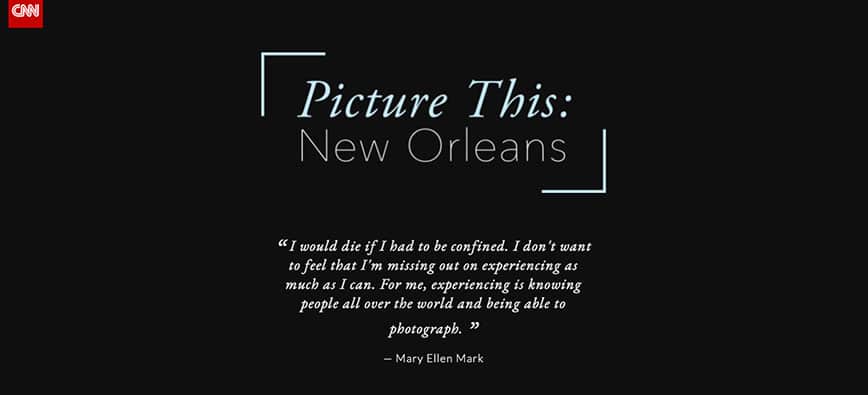
Picture This: New Orleans by Mary Ellen Mark
The last assignment before her passing, Mary Ellen Mark travelled to New Orleans to register the city after a decade after Hurricane Katrina.
The images of the project “bring to life the rebirth and resilience of the people at the heart of this tale”, – says CNNMoney, commissioner of the work.
Each survivor of the hurricane has a story, and Mary Ellen Mark was there to record it. Some of them have heartbreaking stories about everything they had to leave behind.
Others have a story of hope – like Sam and Ben, two eight-year-olds born from frozen embryos kept in a hospital that lost power supply during the hurricane, yet they managed to survive.

Selfie by Cindy Sherman
Cindy Sherman is an American photographer whose work is mainly done through self-portraits. With them, she explores the concept of identity, gender stereotypes, as well as visual and cultural codes.
One of her latest photo essays was a collaboration with W Magazine entitled Selfie. In it, the author explores the concept of planned candid photos (‘plandid’).
The work was made for Instagram, as the platform is well known for the conflict between the ‘real self’ and the one people present online. Sherman started using Facetune, Perfect365 and YouCam to alter her appearance on selfies – in Photoshop, you can modify everything, but these apps were designed specifically to “make things prettier”- she says, and that’s what she wants to explore in this photo essay.
Tokyo Compression by Michael Wolf
Michael Wolf has an interest in the broad-gauge topic Life in Cities. From there, many photo essays have been derived – amongst them – Tokyo Compression .
He was horrified by the way people in Tokyo are forced to move to the suburbs because of the high prices of the city. Therefore, they are required to make long commutes facing 1,5 hours of train to start their 8+ hour workday followed by another 1,5 hours to get back home.
To portray this way of life, he photographed the people inside the train pressed against the windows looking exhausted, angry or simply absent due to this way of life.
You can visit his website to see other photo essays that revolve around the topic of life in megacities.
Final Words
It’s not easy to make photo essays, so don’t expect to be great at it right from your first project.
Start off small by choosing a specific subject that’s interesting to you – that will come from an honest place, and it will be a great practice for some bigger projects along the line.
Whether you like to shoot still life or you’re a travel photographer, I hope these photo essay tips and photo essay examples can help you get started and grow in your photography.
Let us know which topics you are working on right now – we’ll love to hear from you!

Check out these 8 essential tools to help you succeed as a professional photographer.
Includes limited-time discounts.

Ana Mireles is a Mexican researcher that specializes in photography and communications for the arts and culture sector.
Penelope G. To Ana Mireles Such a well written and helpful article for an writer who wants to inclue photo essay in her memoir. Thank you. I will get to work on this new skill. Penelope G.
Herman Krieger Photo essays in black and white
Leave a Comment Cancel Reply
👋 WELCOME TO SHOTKIT!

🔥 Popular NOW:

Unlock the EXACT blueprint to capture breathtaking iPhone photos!

IMAGES
VIDEO
COMMENTS
Photography Personal Statement Example 1. I've always imagined a photograph to be like a jigsaw puzzle, you have to find the various pieces that fit together to create something visually spellbinding. I like to set up my scenes; plastering bubble wrap and newspapers all over my house, covering absolutely everything or dragging my living room ...
Essay Framework #1: Snapshot structure. The "snapshot" structure is a way of structuring your narrative into a series of "snapshot" moments that take the writer through a journey. A "snapshot" approach to an essay about photography might work really well. Each frame could be a literal snapshot — a meaningful picture that represents something ...
Here are some handy essay ideas and examples for inspiration! 1. A day in the life. Your first photo essay idea is simple: Track a life over the course of one day. You might make an essay about someone else's life. Or the life of a location, such as the sidewalk outside your house.
Richard's hard-hitting images offer a true reflection of life in an A&E ward. The stress, energy, and raw emotion all come through loud and clear in every photo within the essay. Focused and concise while being informative and powerful, the Knife and Gun Club is one of the finest photo essay examples.
5. Place Over Time. View the "At Home in the Ozarks" photo essay by Kylee Cole. If you want to document changes and show how the streets, buildings, and parks in your city change over time, select your favorite locations and start to visit them regularly to capture the way they look during different seasons. 6.
Written by MasterClass. Last updated: Jun 7, 2021 • 5 min read. Photo essays tell a story in pictures, and there are many different ways to style your own photo essay. With a wide range of topics to explore, a photo essay can be thought-provoking, emotional, funny, unsettling, or all of the above, but mostly, they should be unforgettable.
Here are six steps to follow to create a photo essay that tells a memorable story. Choose a specific topic or theme for your photo essay. There are two types of photo essays: the narrative and the thematic. Narrative photo essays focus on a story you're telling the viewer, while thematic photo essays speak to a specific subject.
Unlike your typical essay in college, a photo essay is a project where you present a series of photographs or images to tell a story, share a narrative, or push a theme/agenda. Thus, a photo essay facilitates picture-led storytelling, which is a creative innovation in photojournalism. It is also known as a photographic or picture essay.
In brief, photography is an art since it uses a variety of human actions to create aural, visual, or performative artifacts that show the author's creativity or technical proficiency and are intended to be admired […] We will write a custom essay specifically for you by our professional experts. 185 writers online.
3. Take your time. A great photo essay is not done in a few hours. You need to put in the time to research it, conceptualizing it, editing, etc. That's why I previously recommended following your passion because it takes a lot of dedication, and if you're not passionate about it - it's difficult to push through. 4.